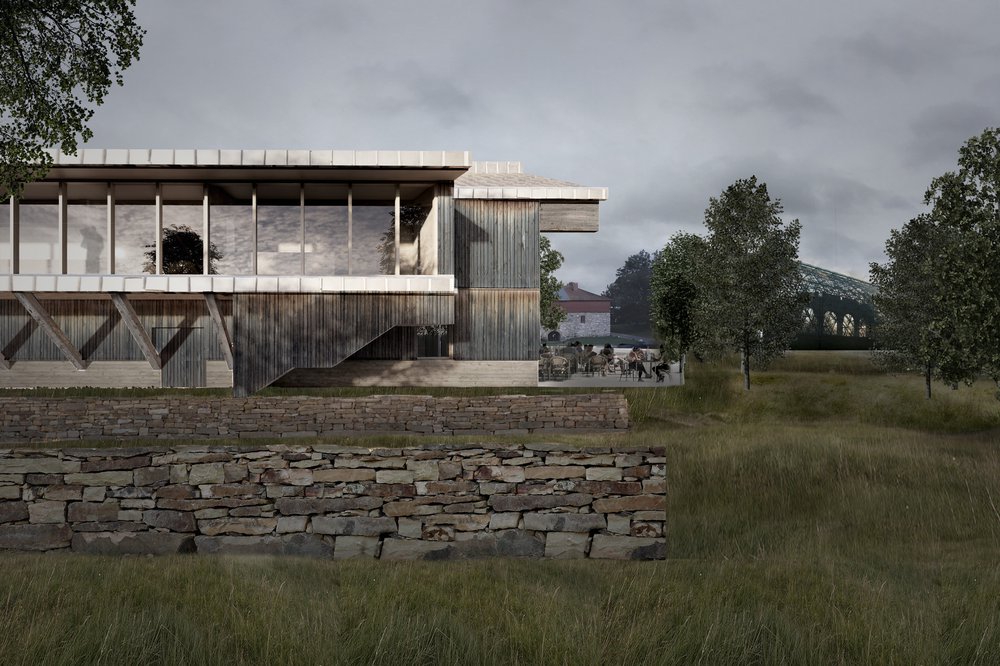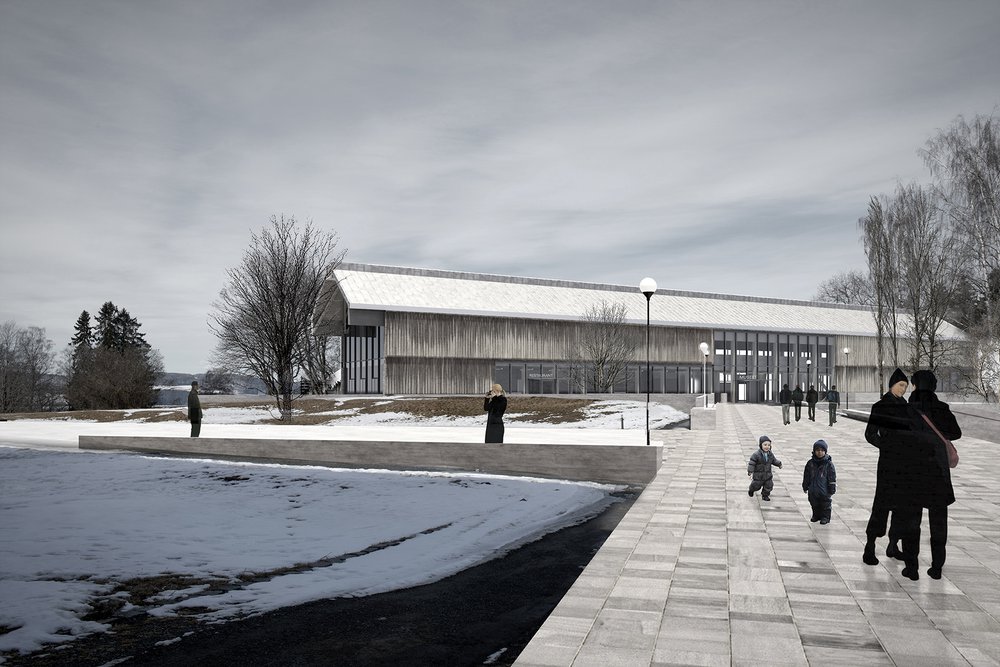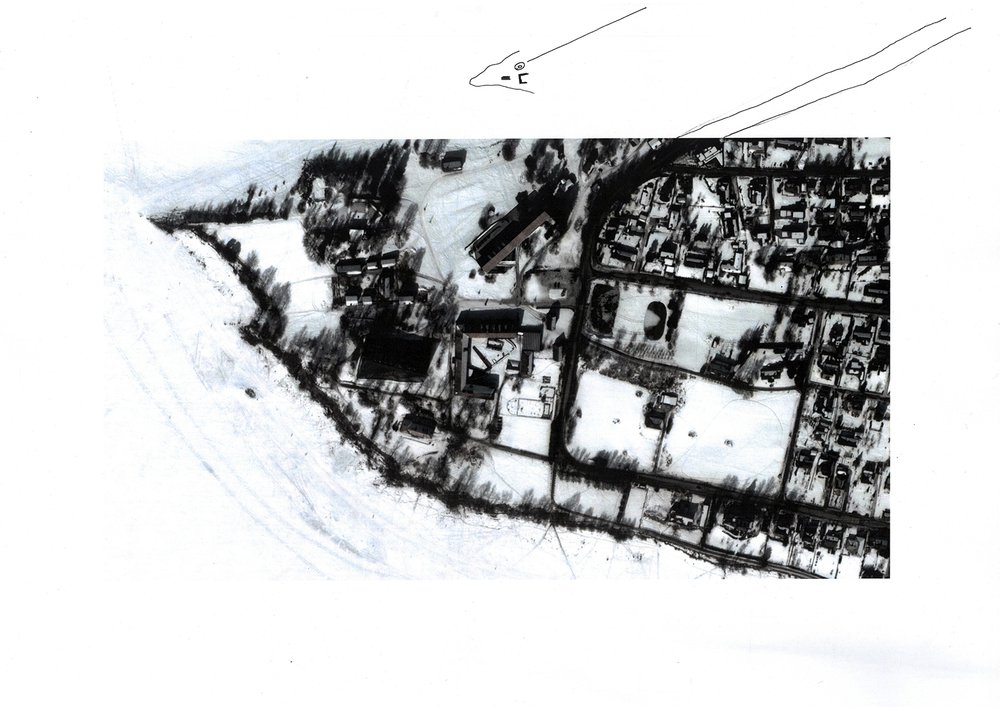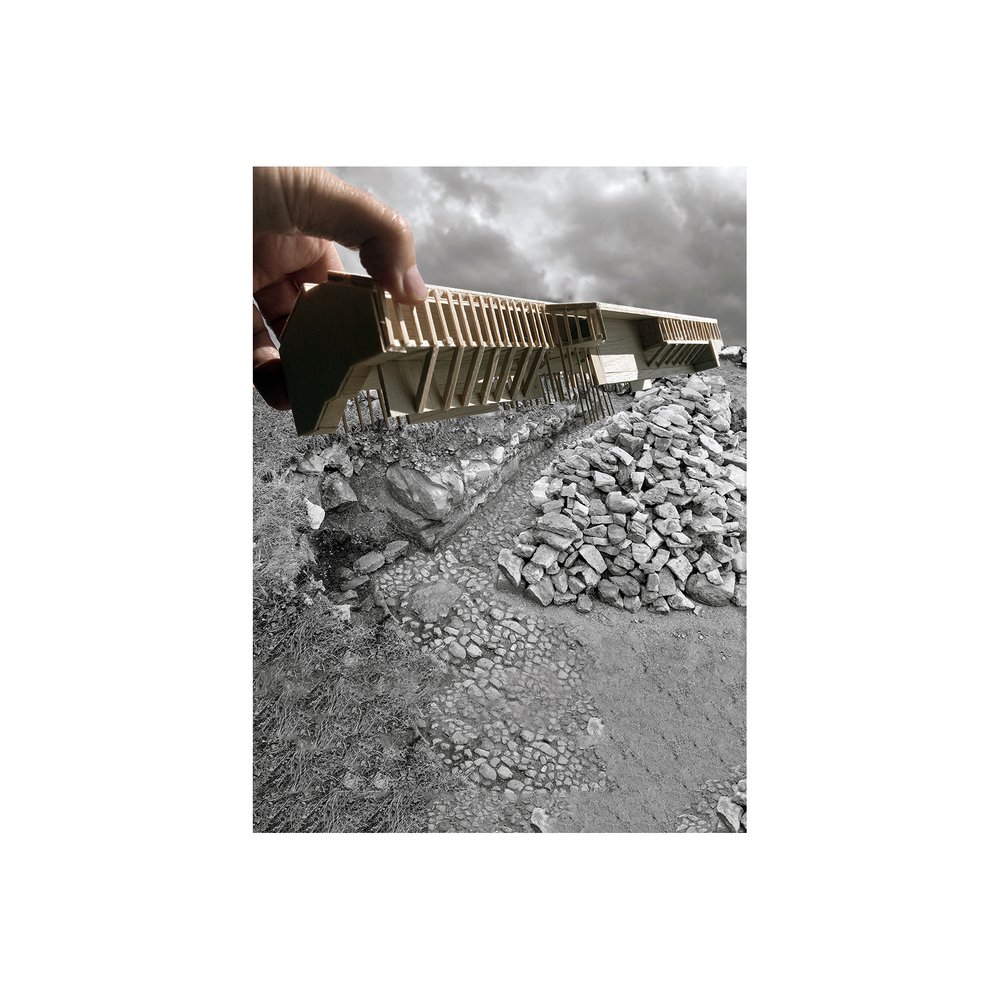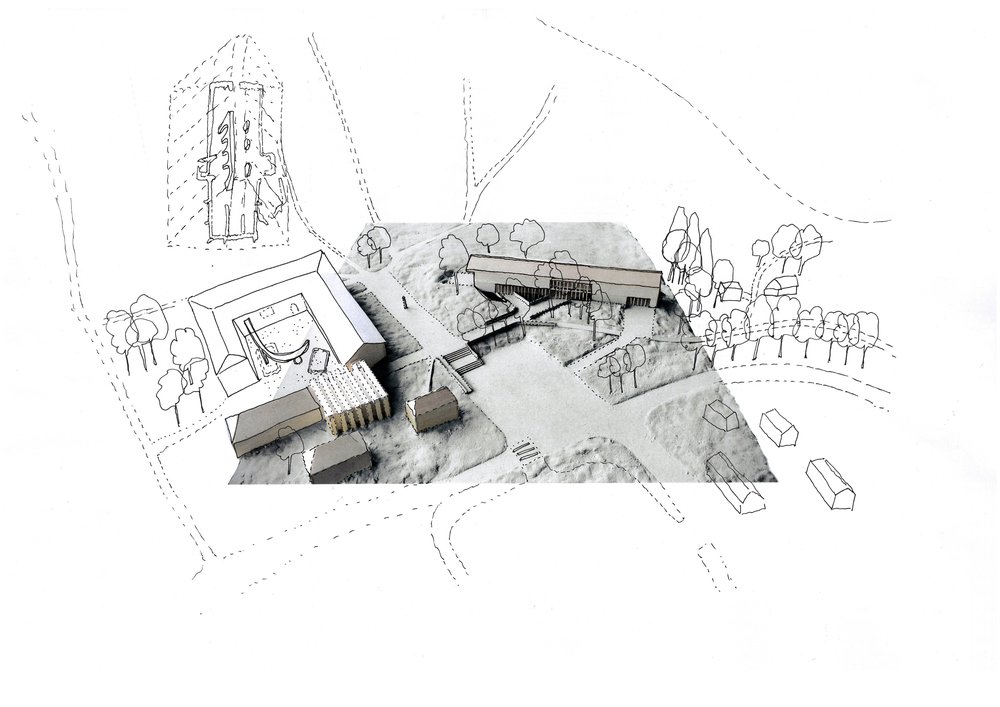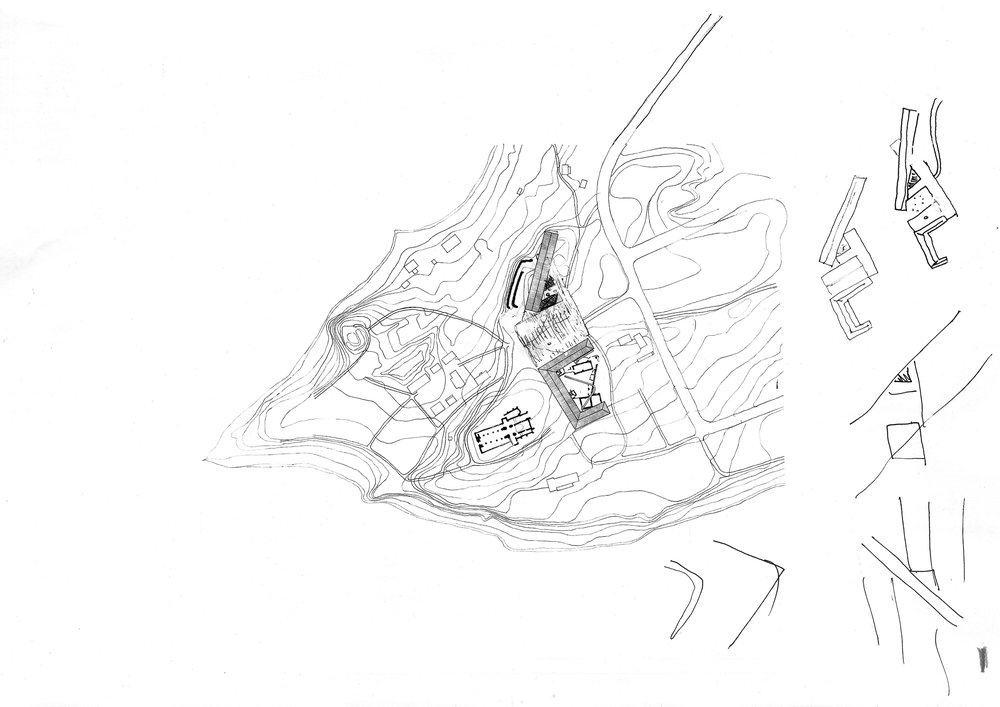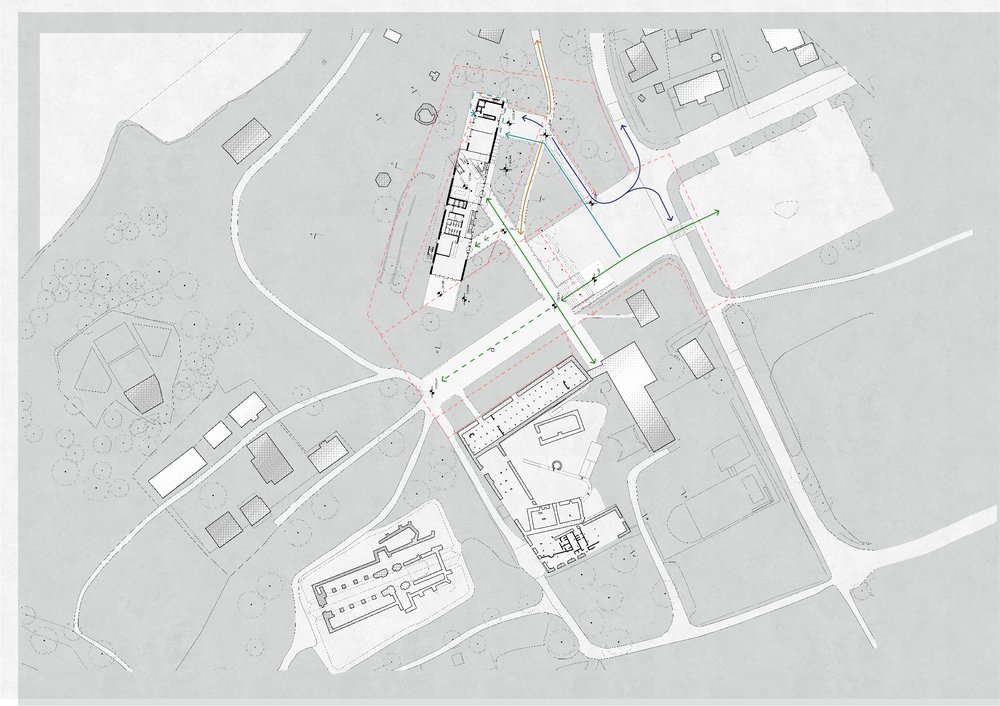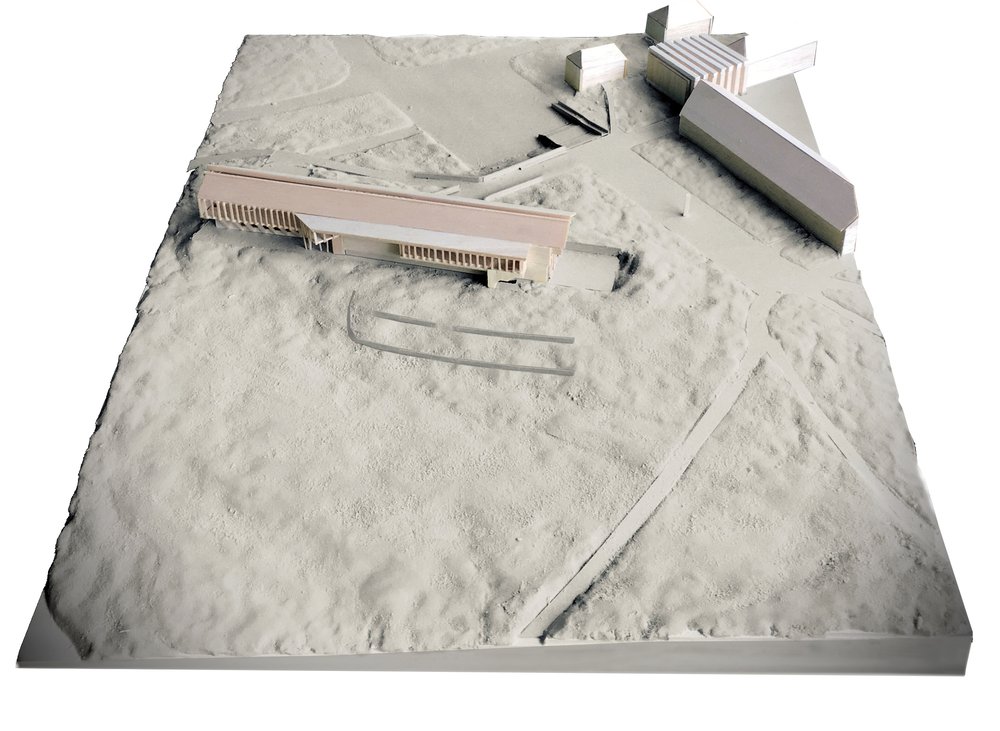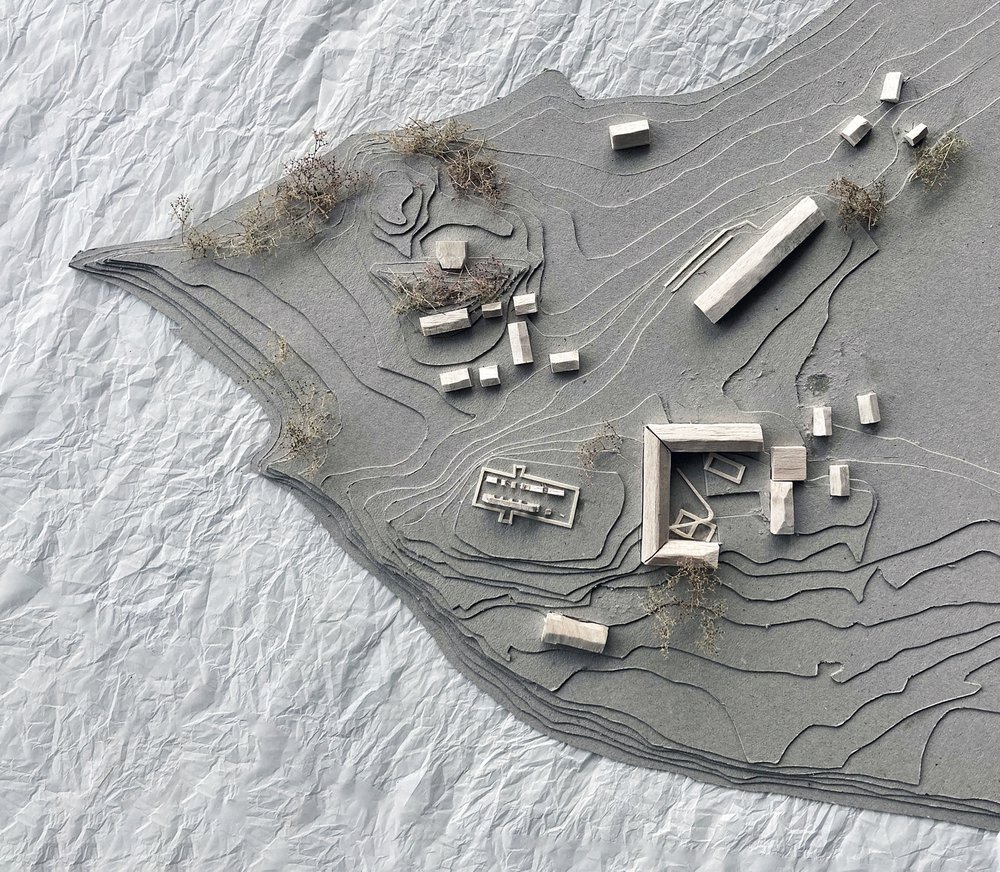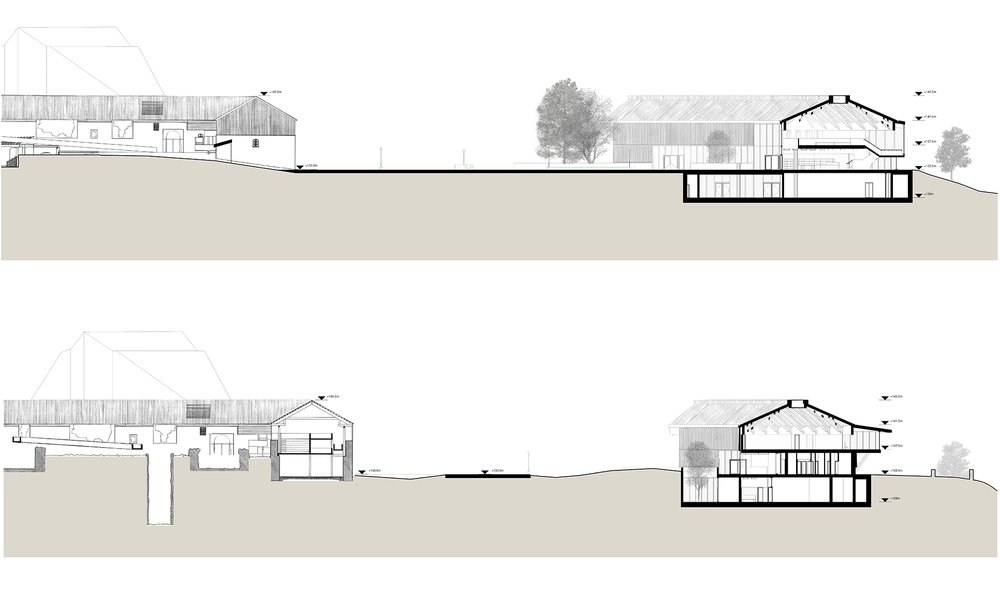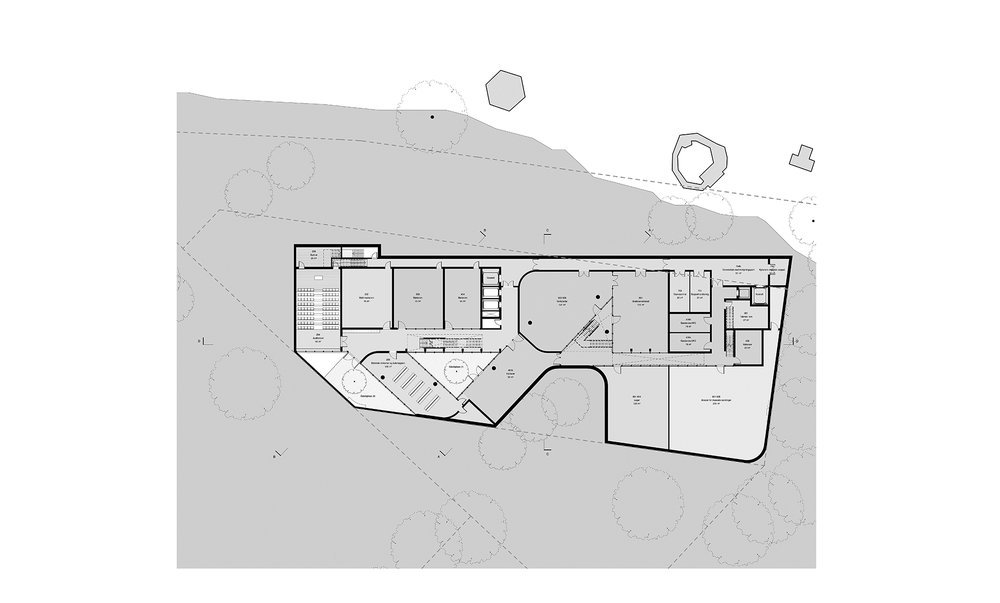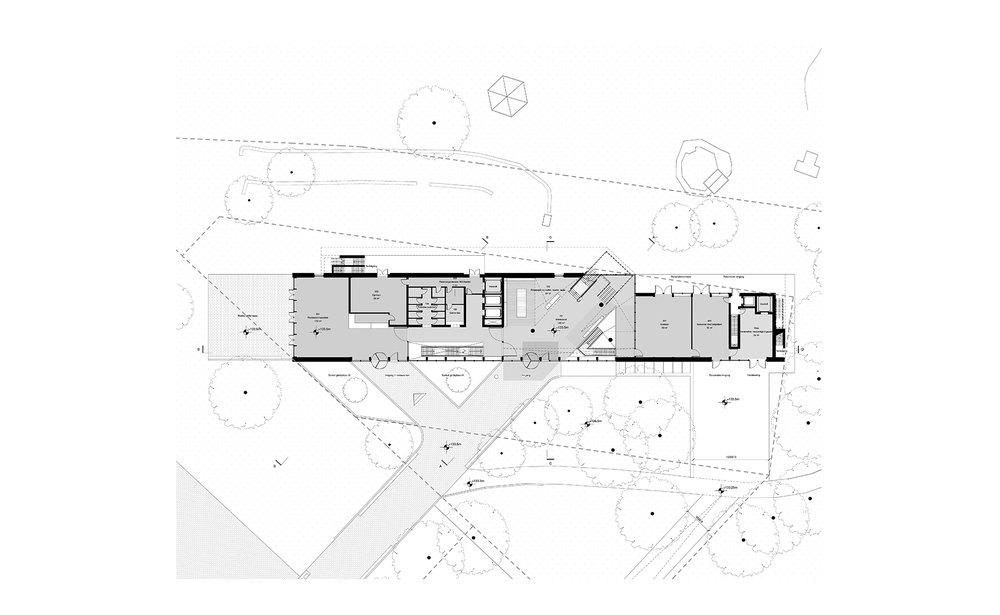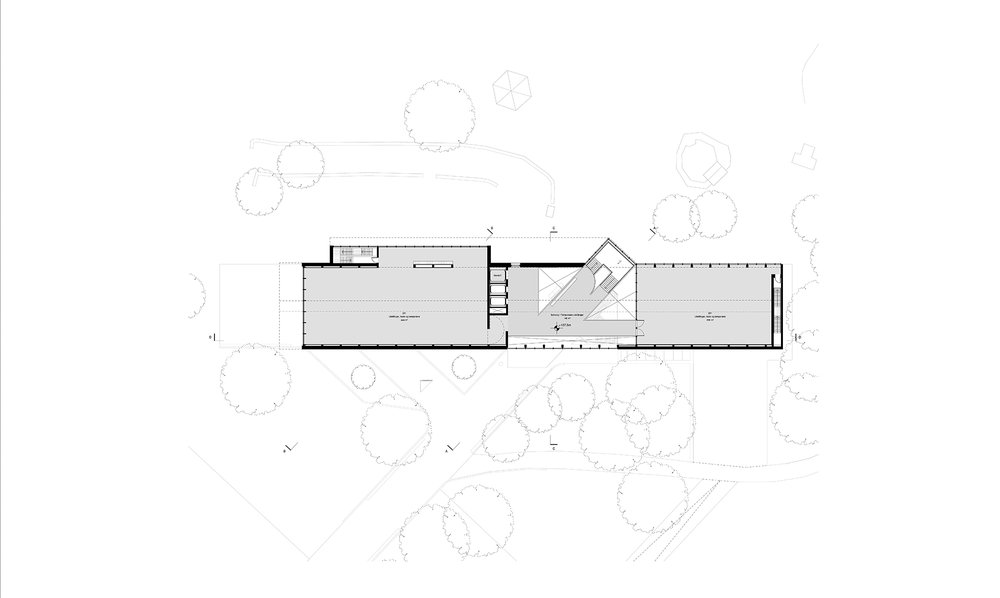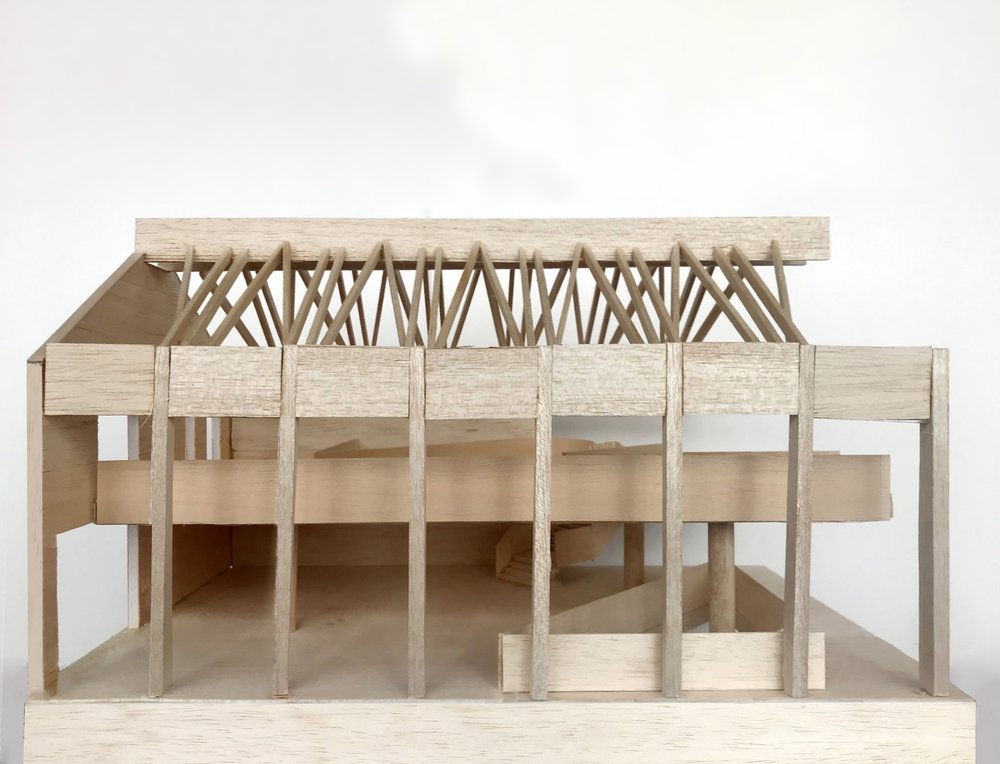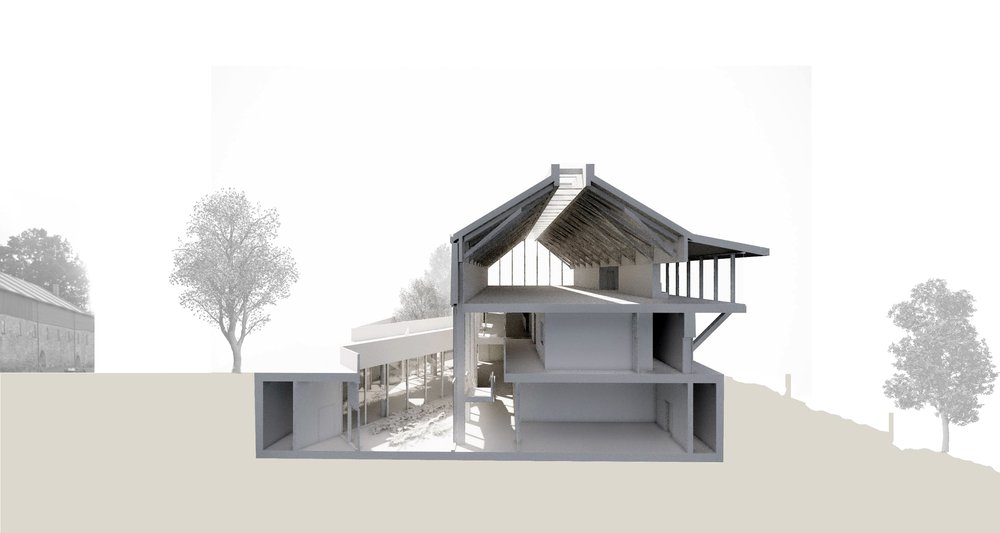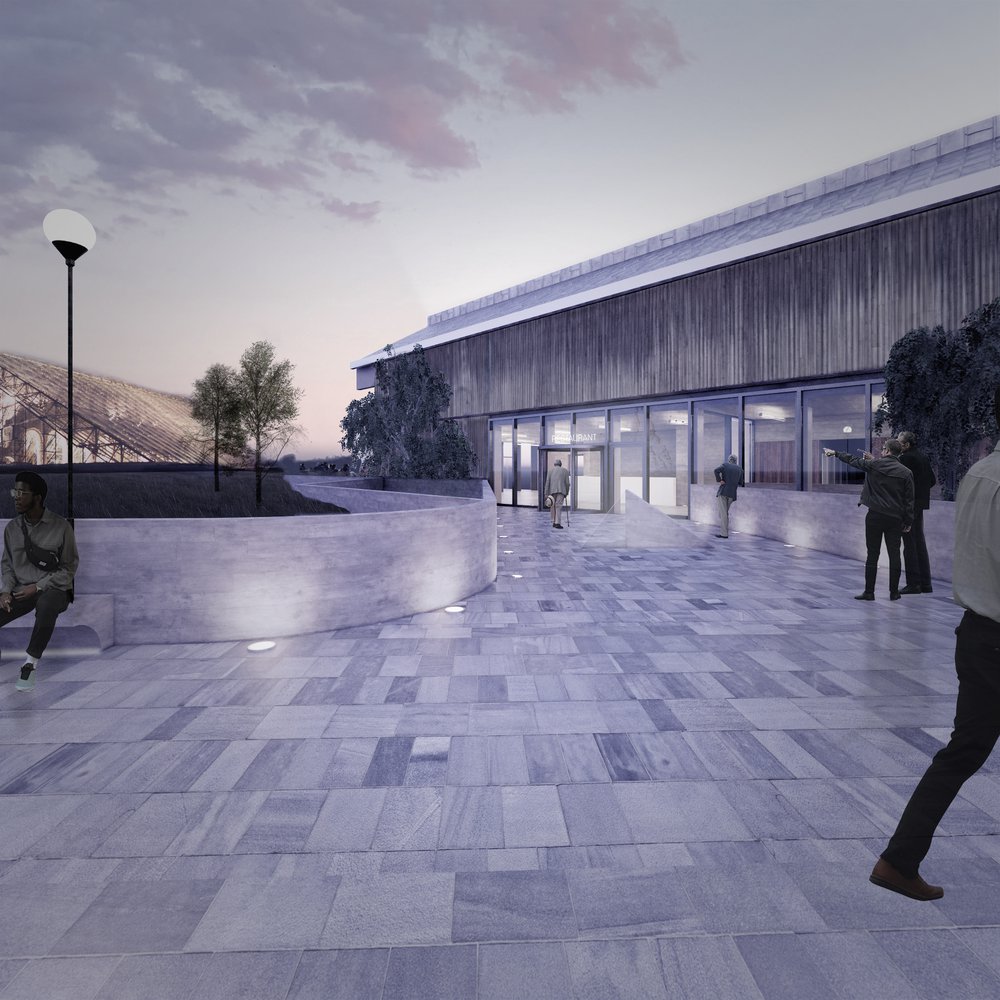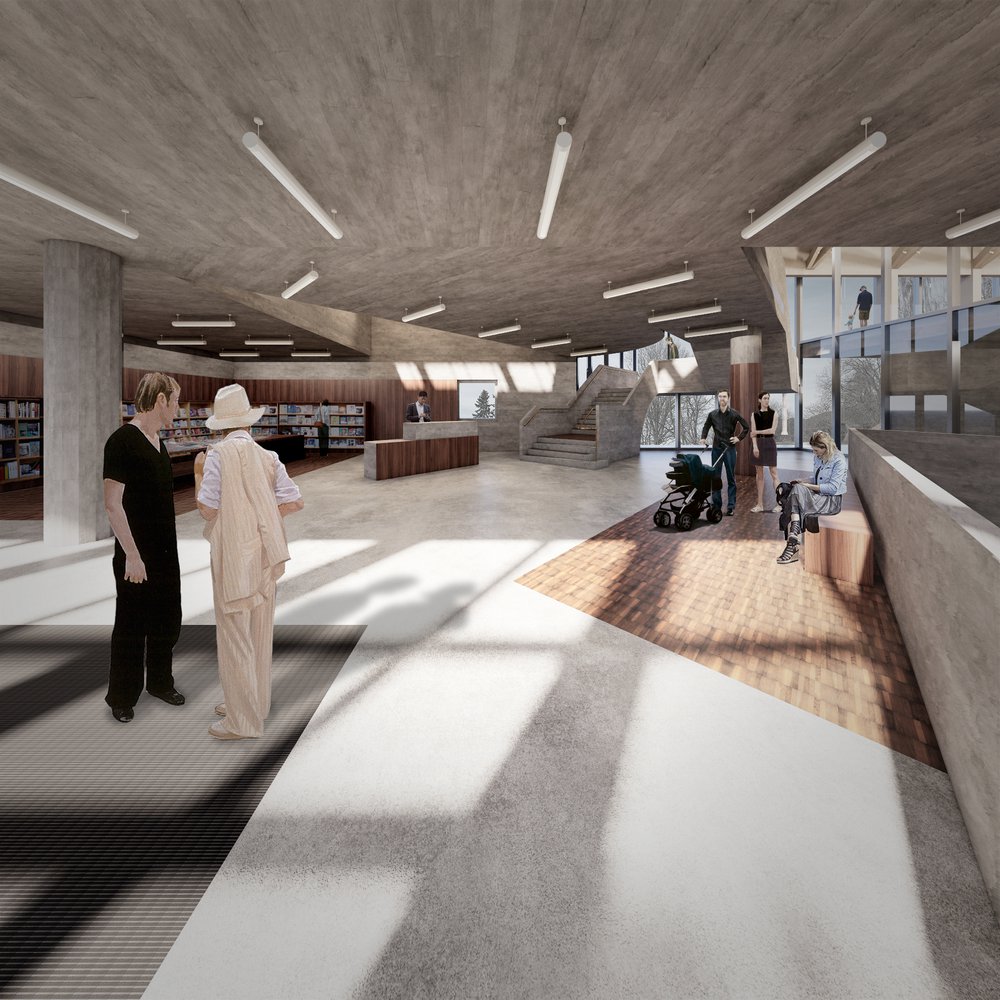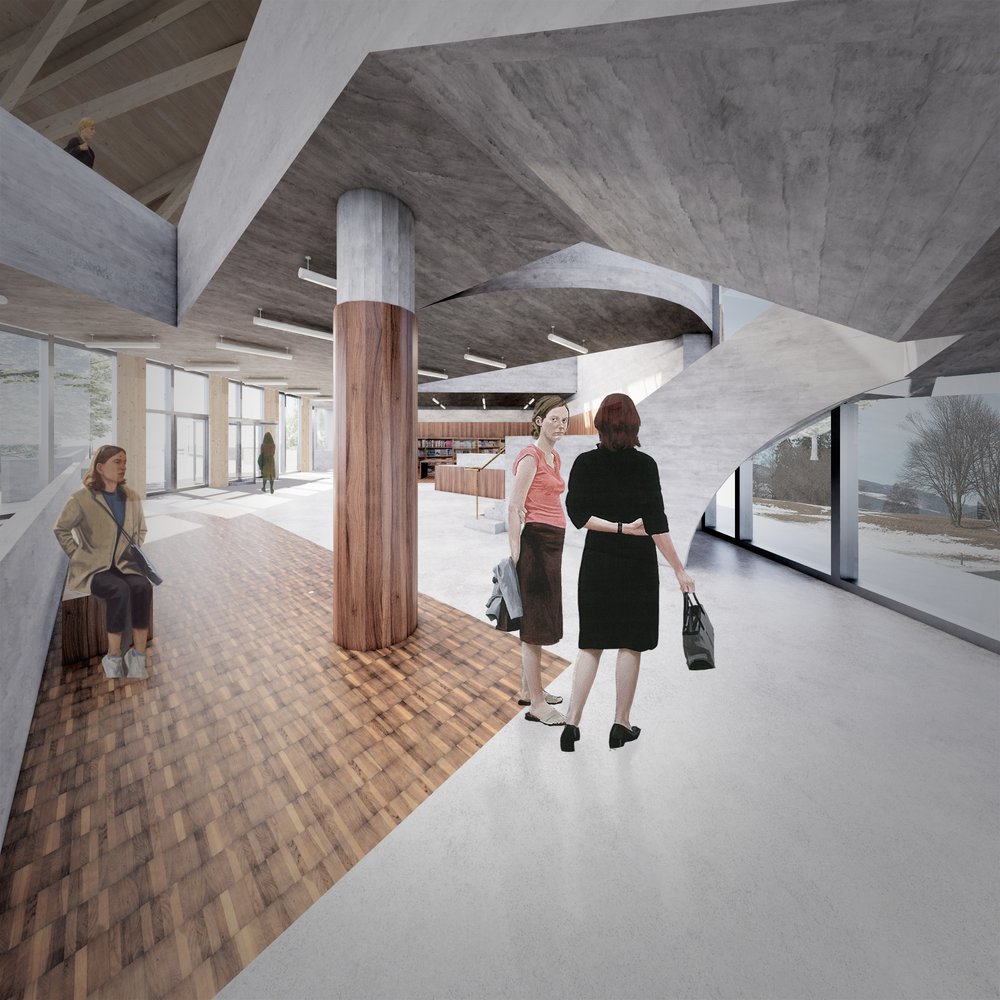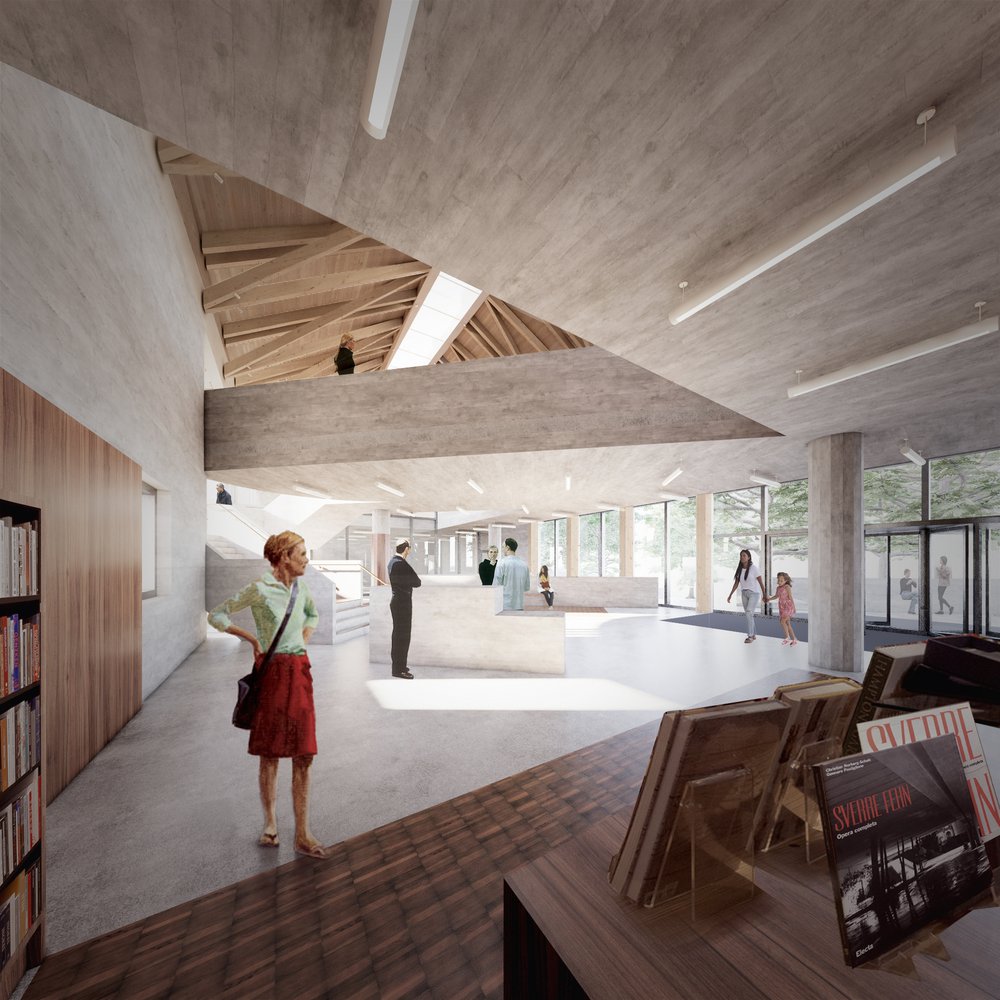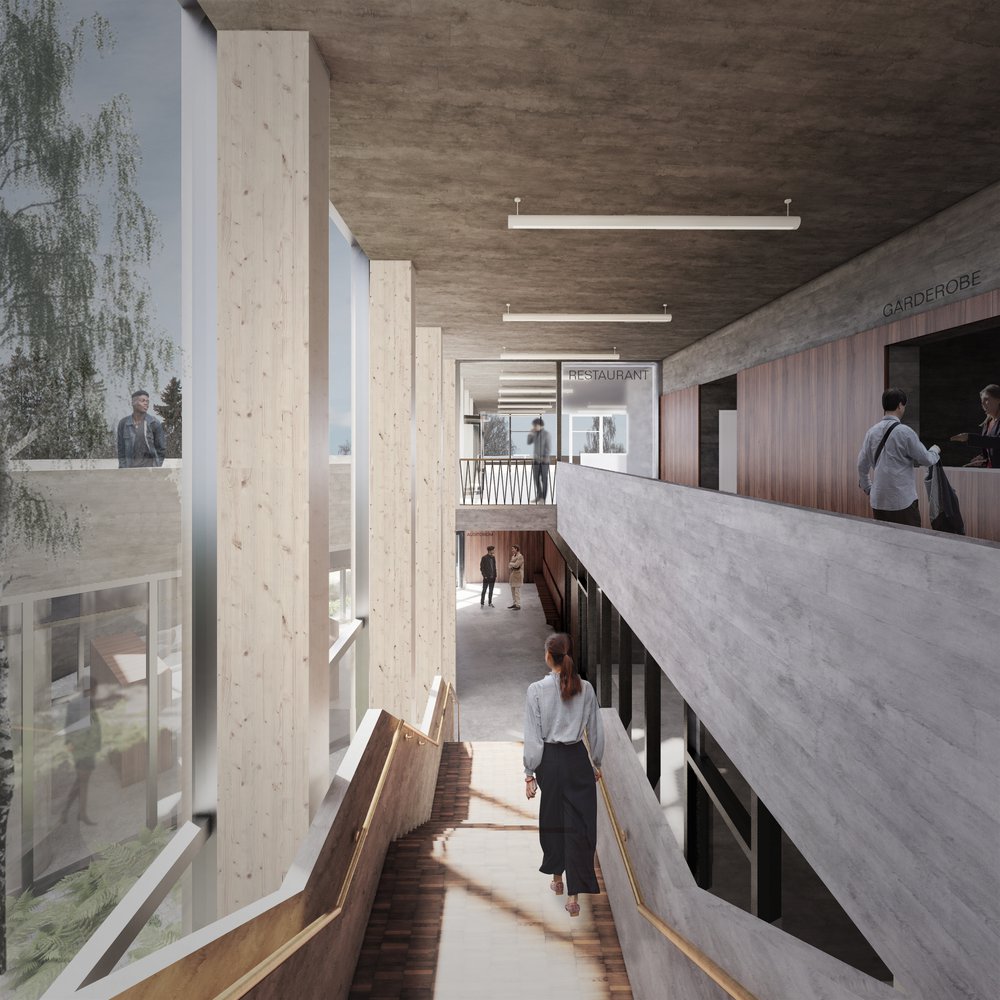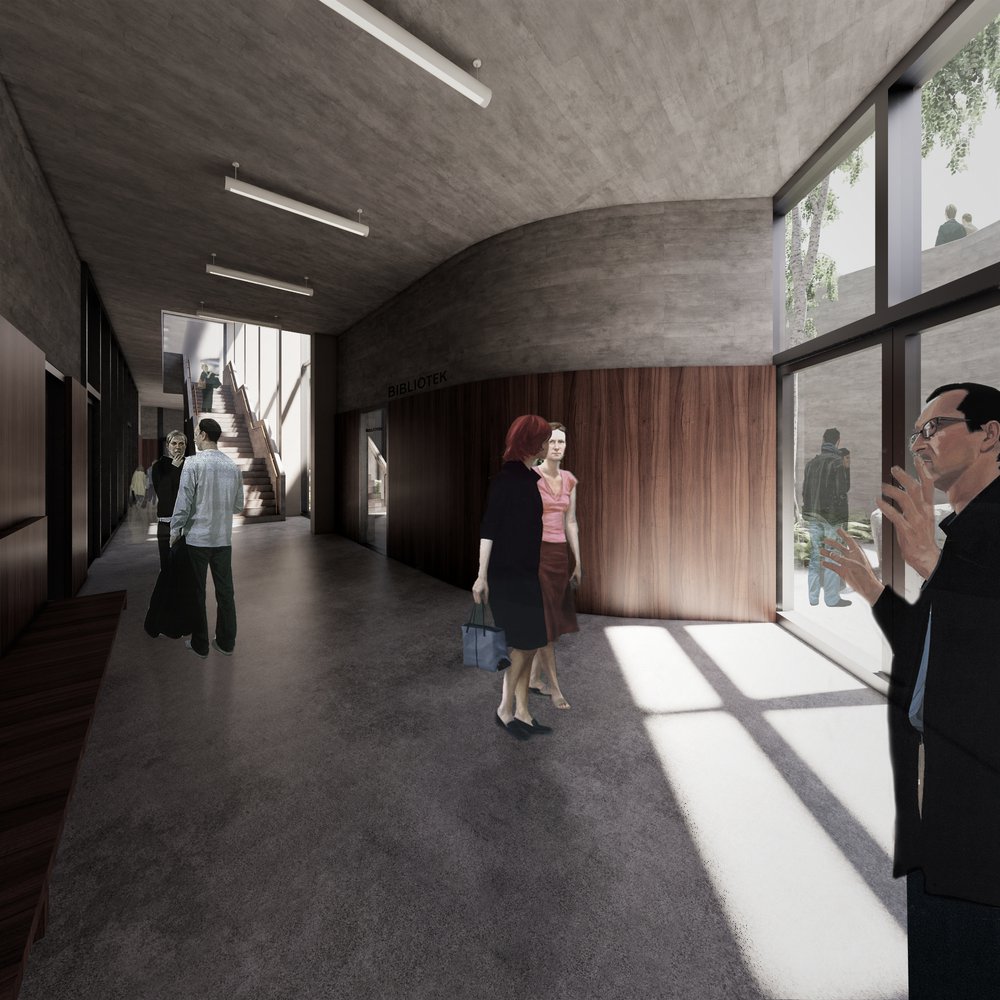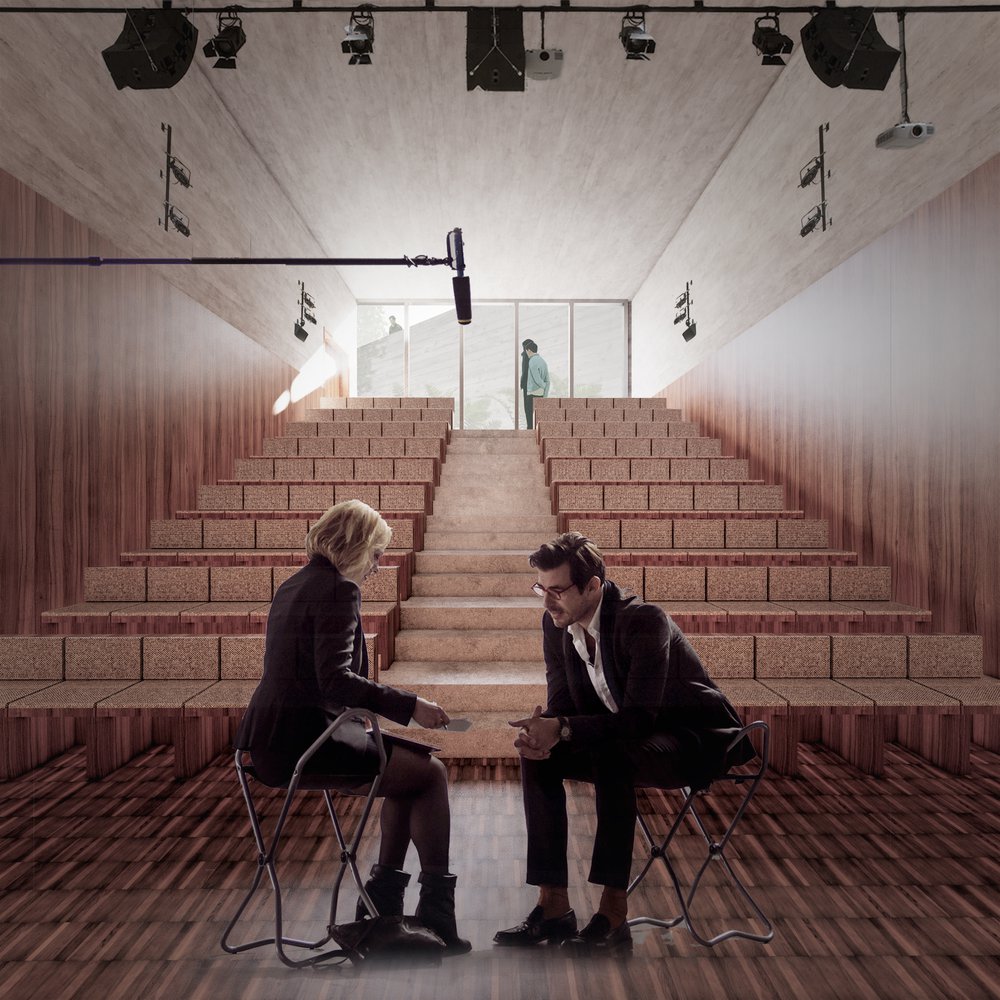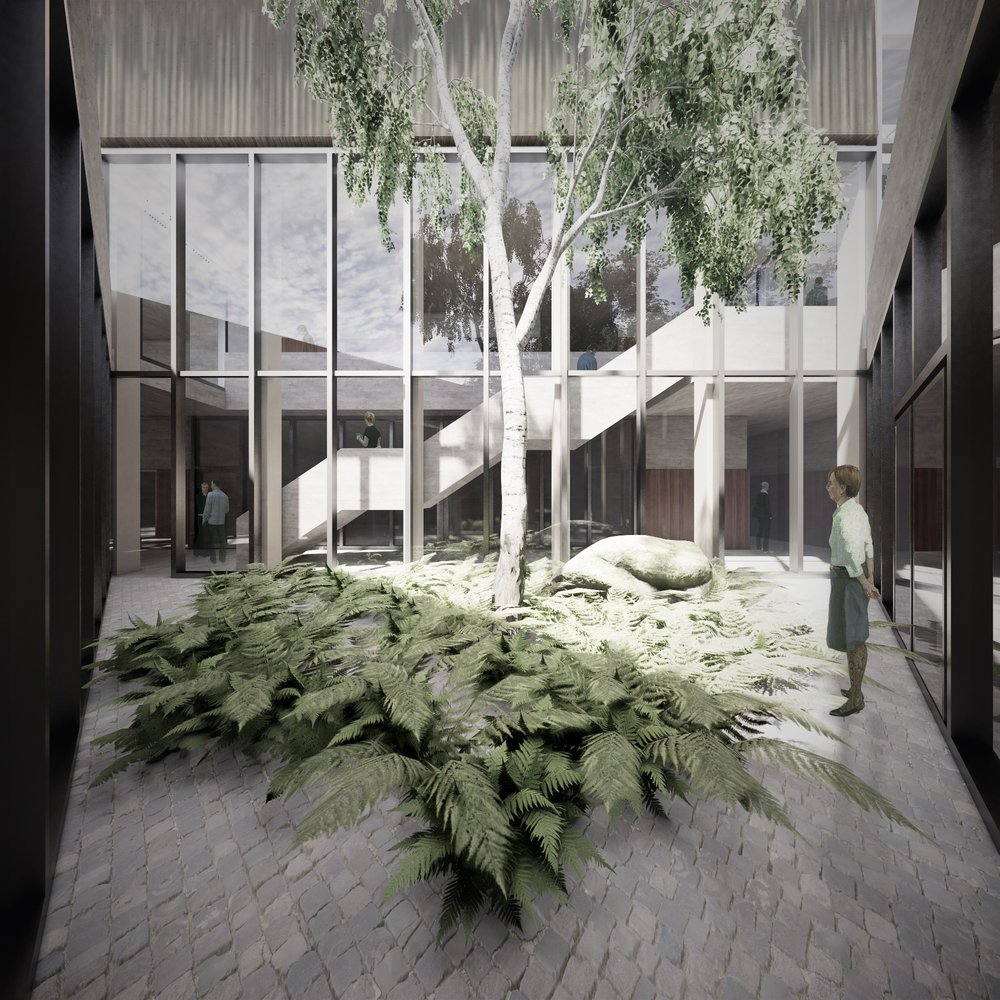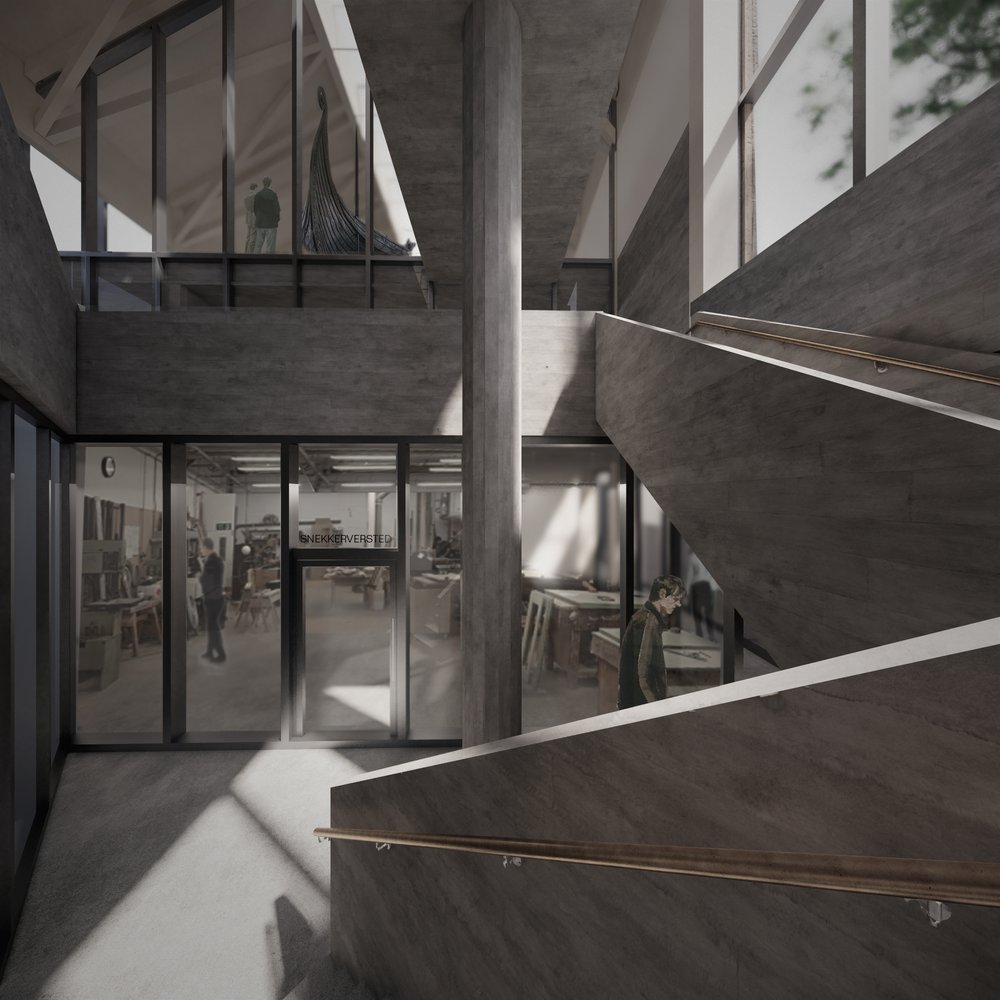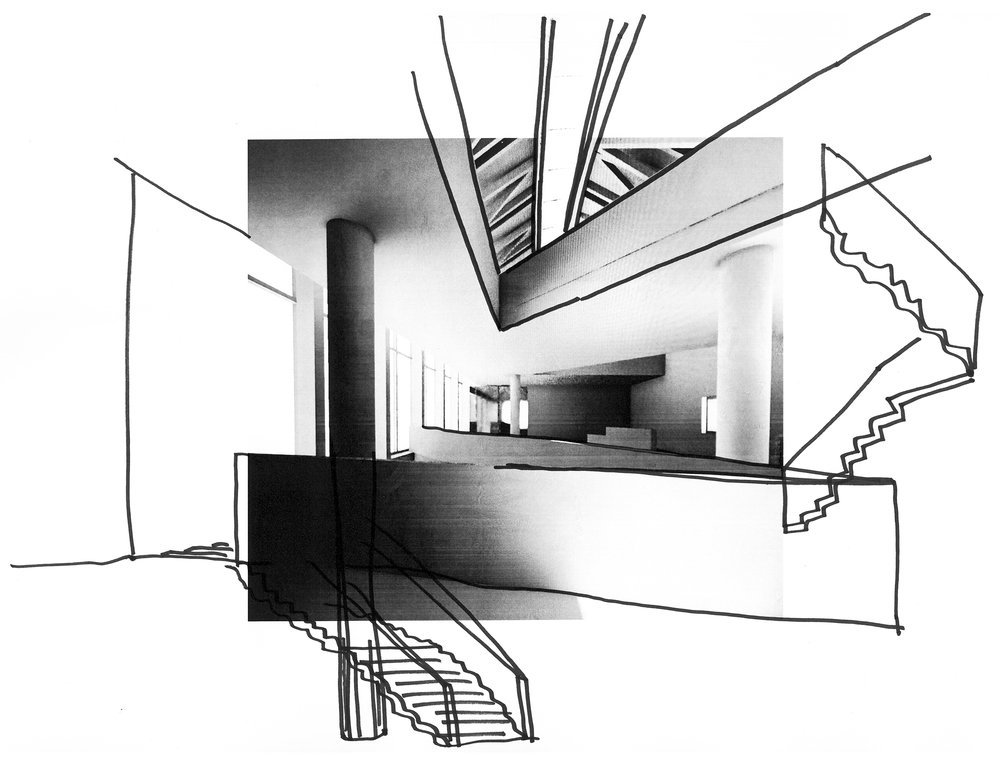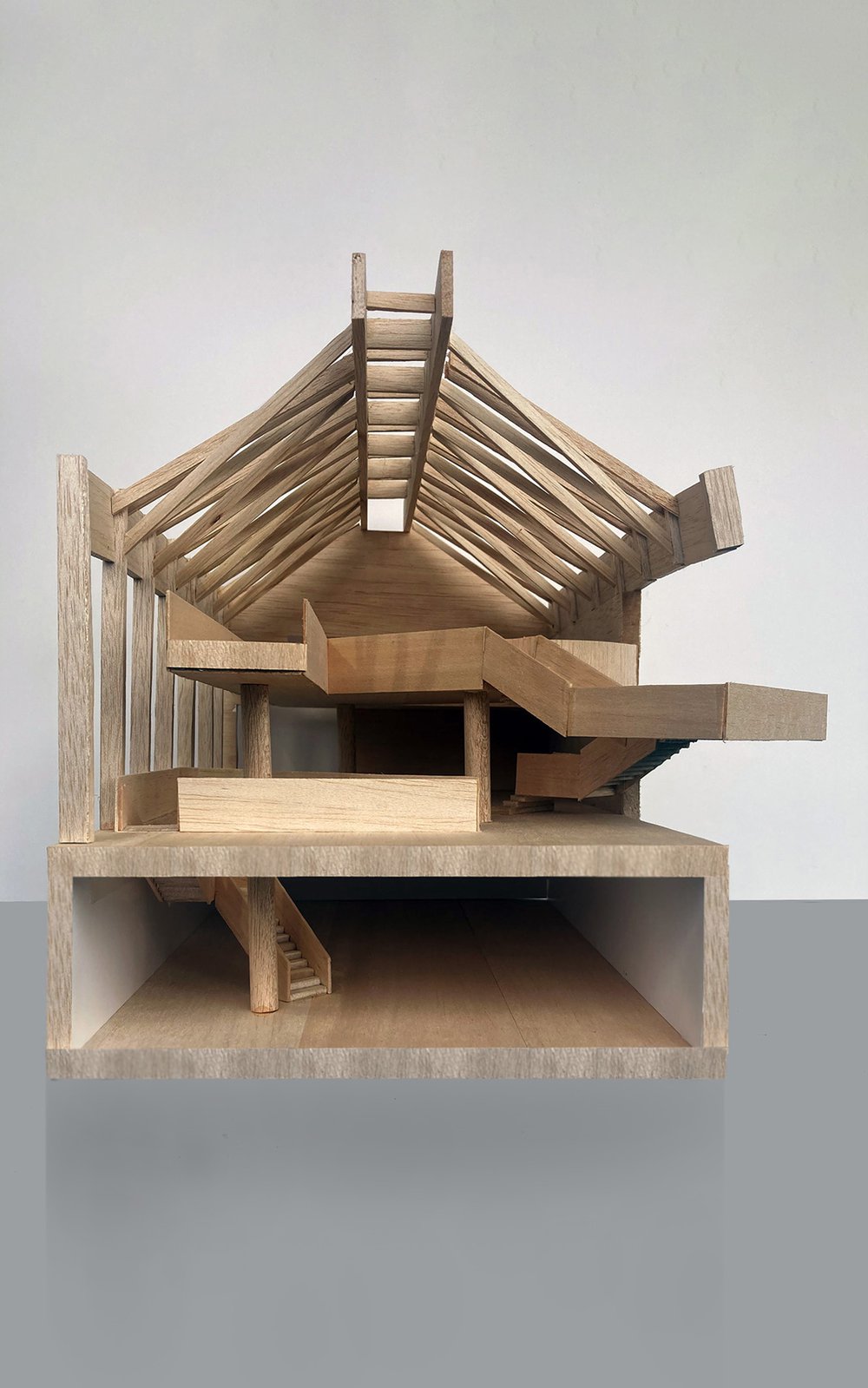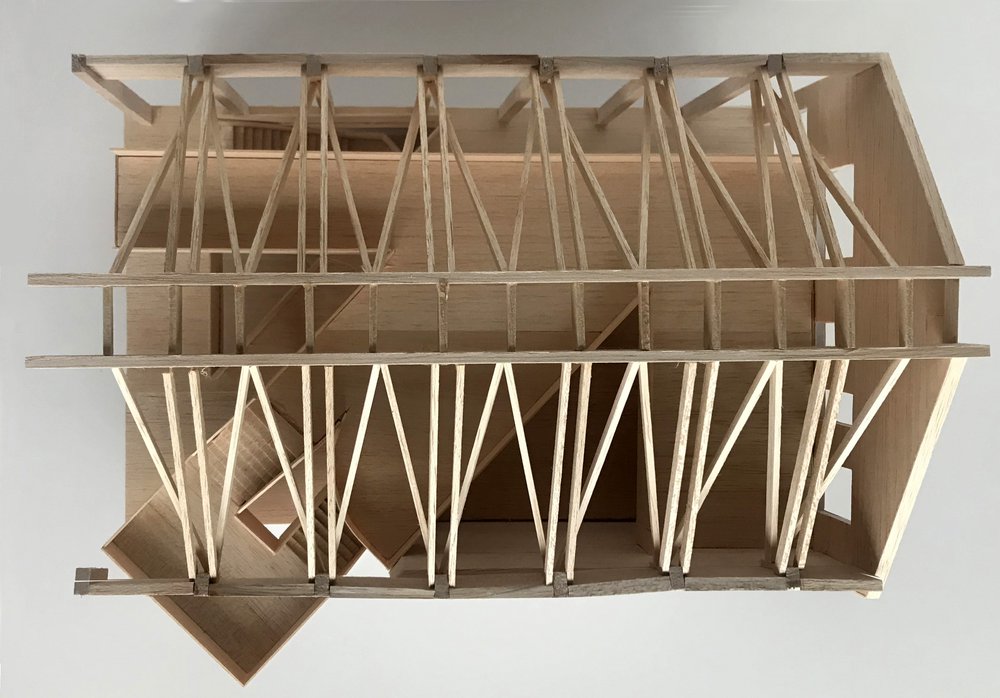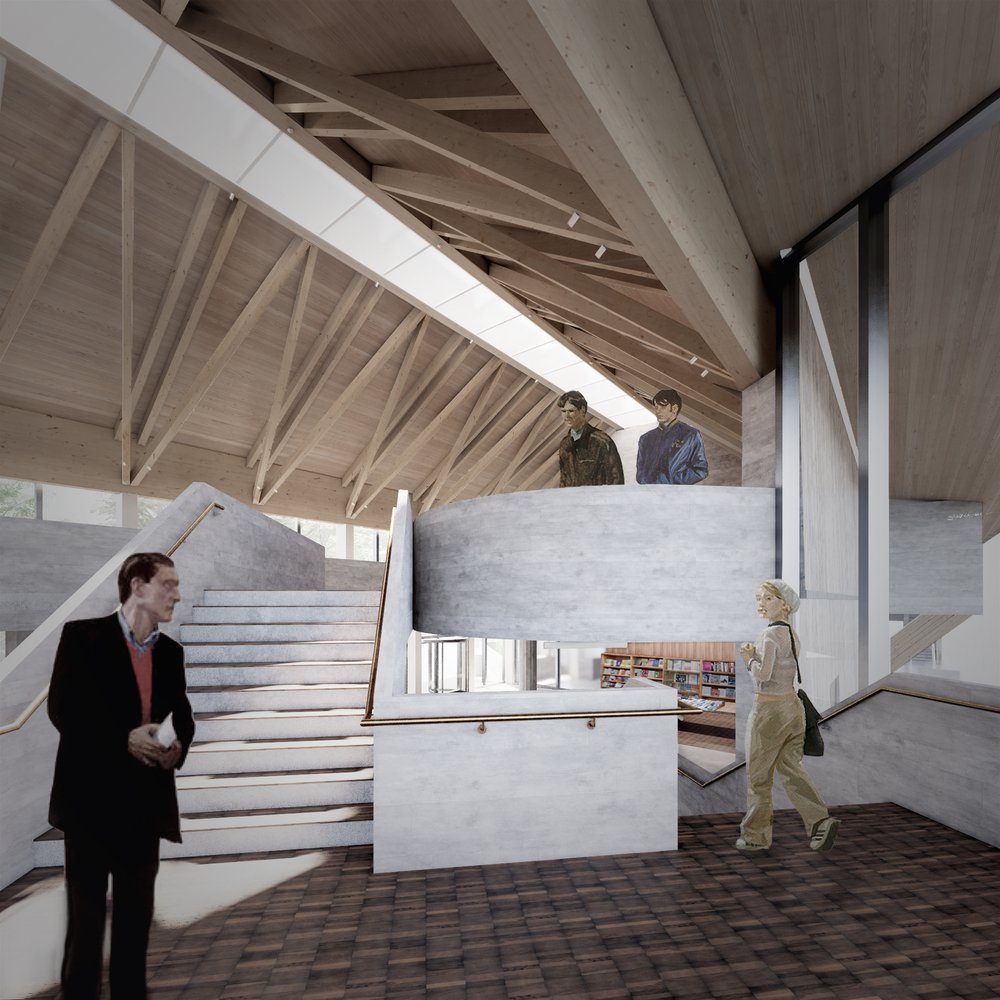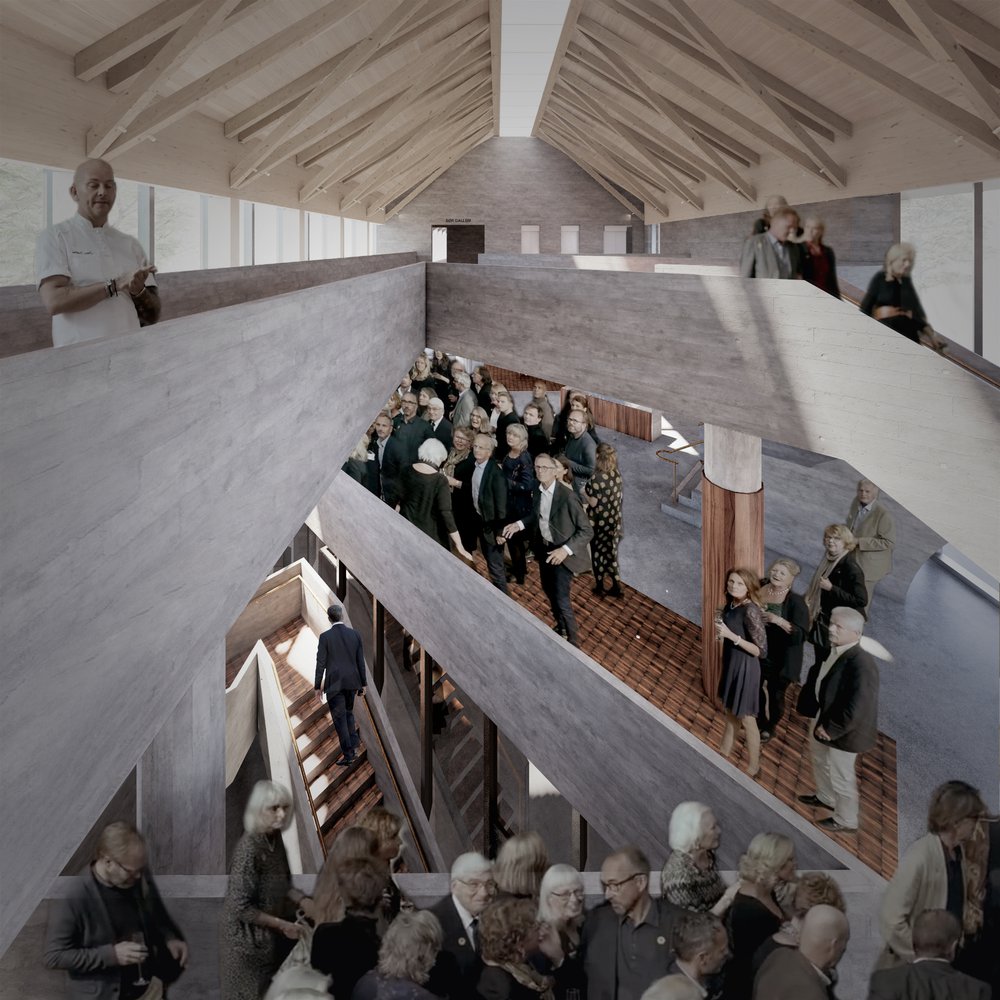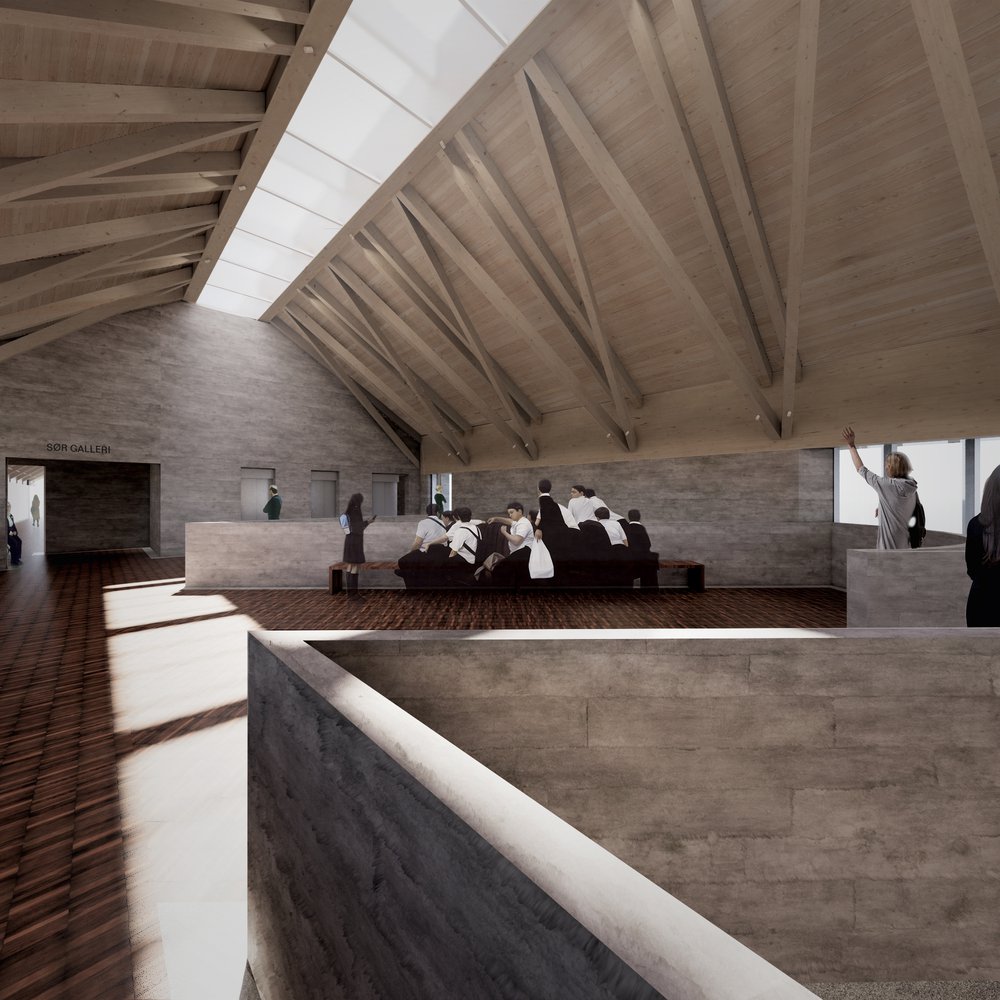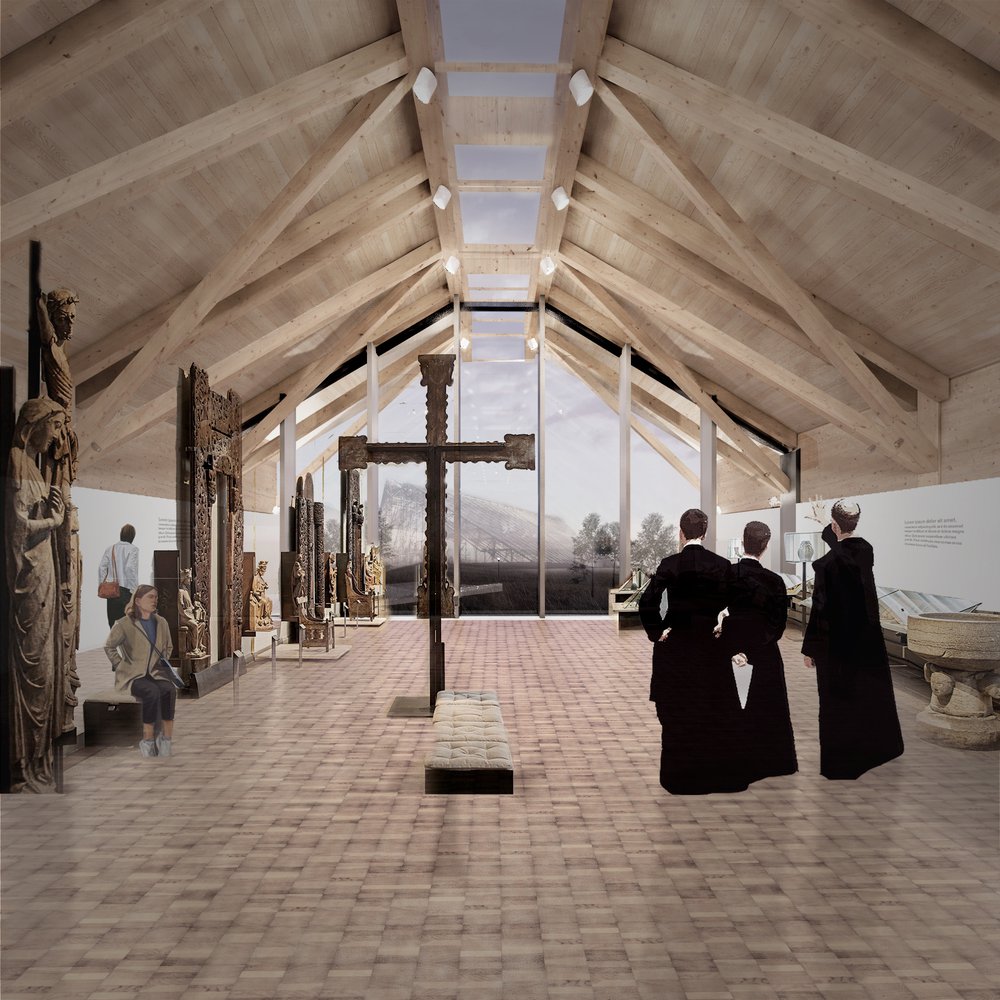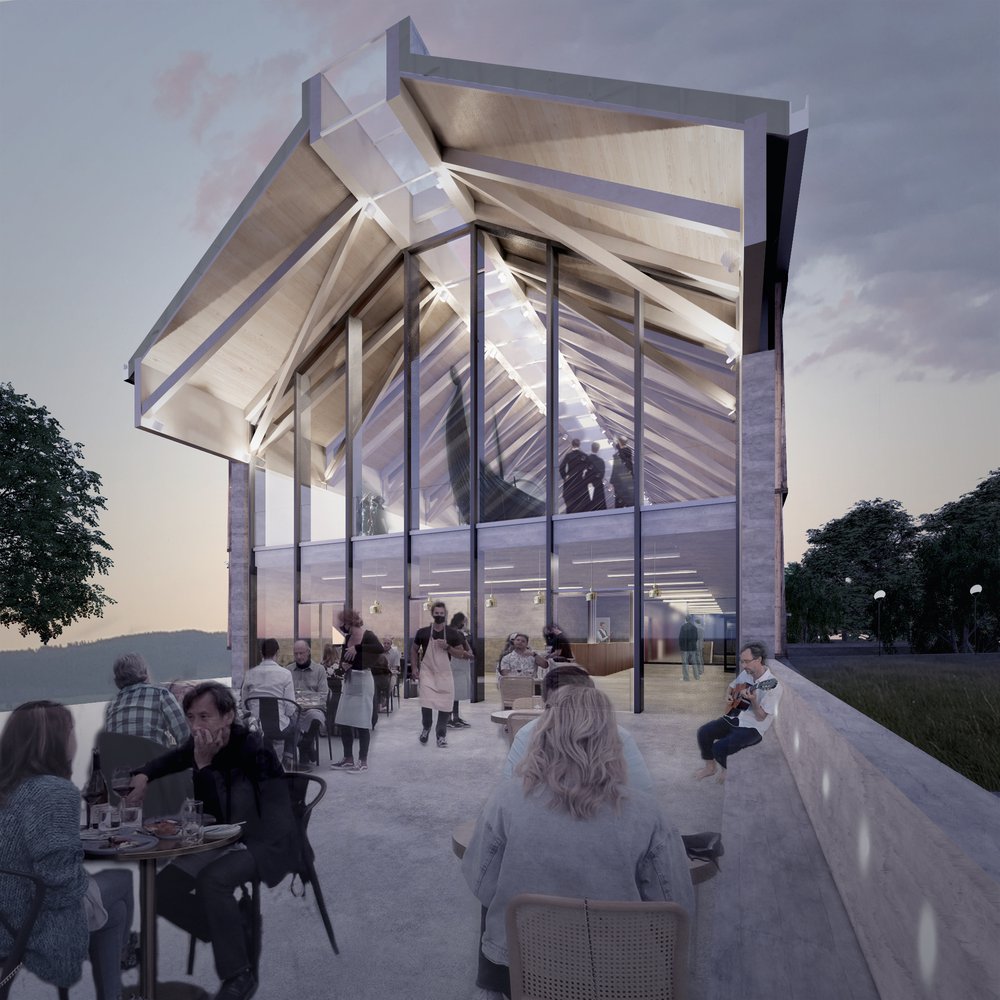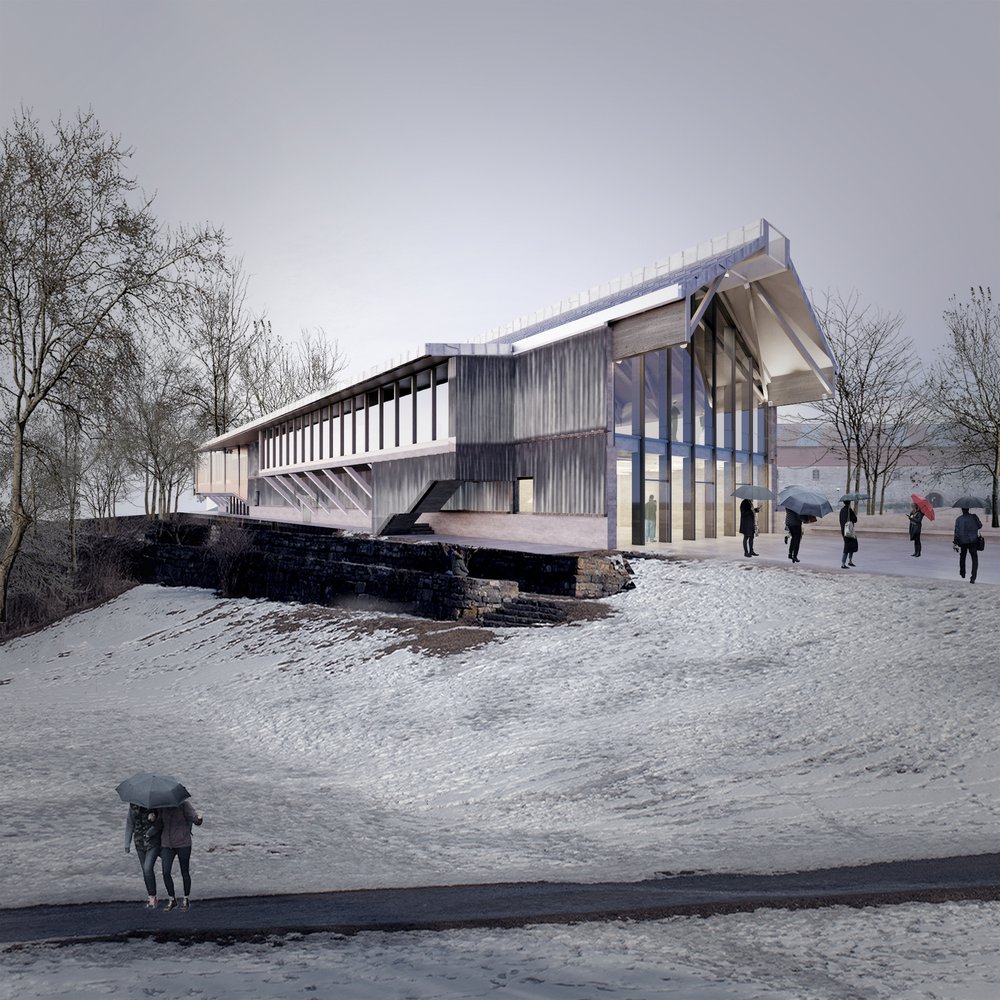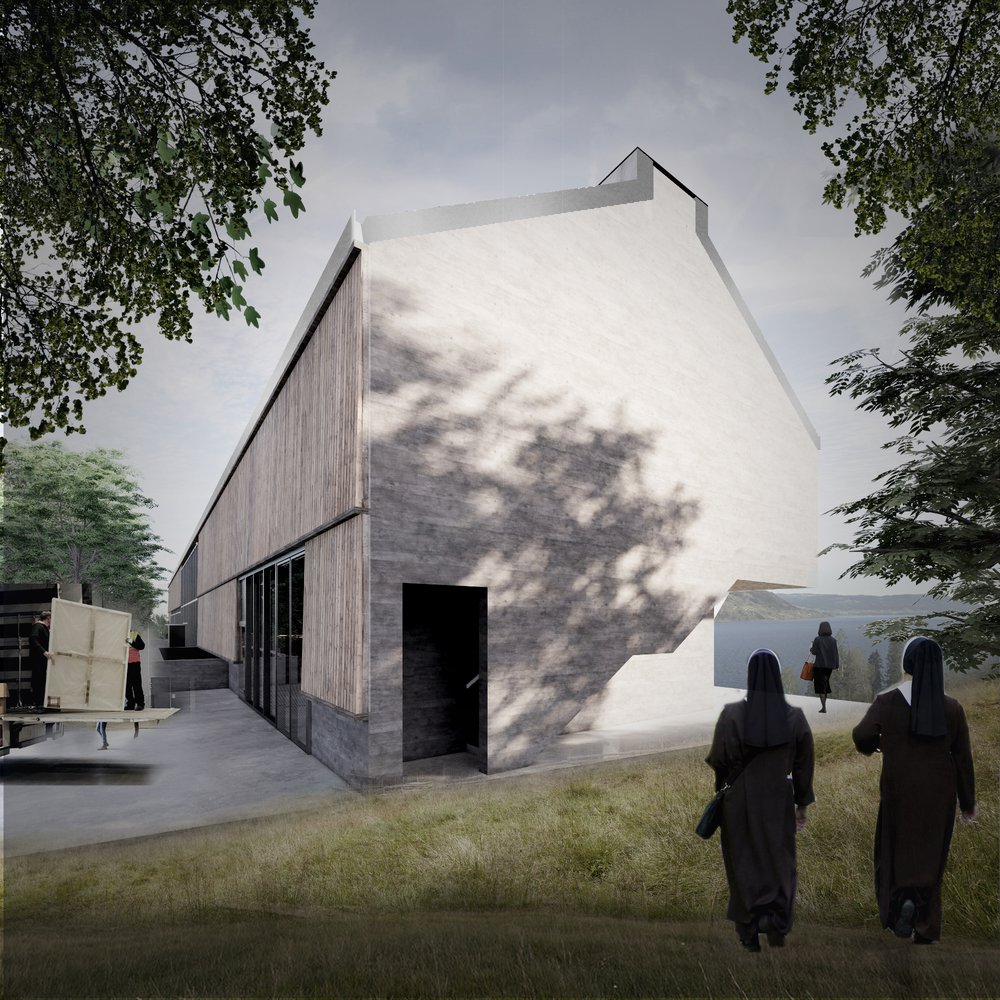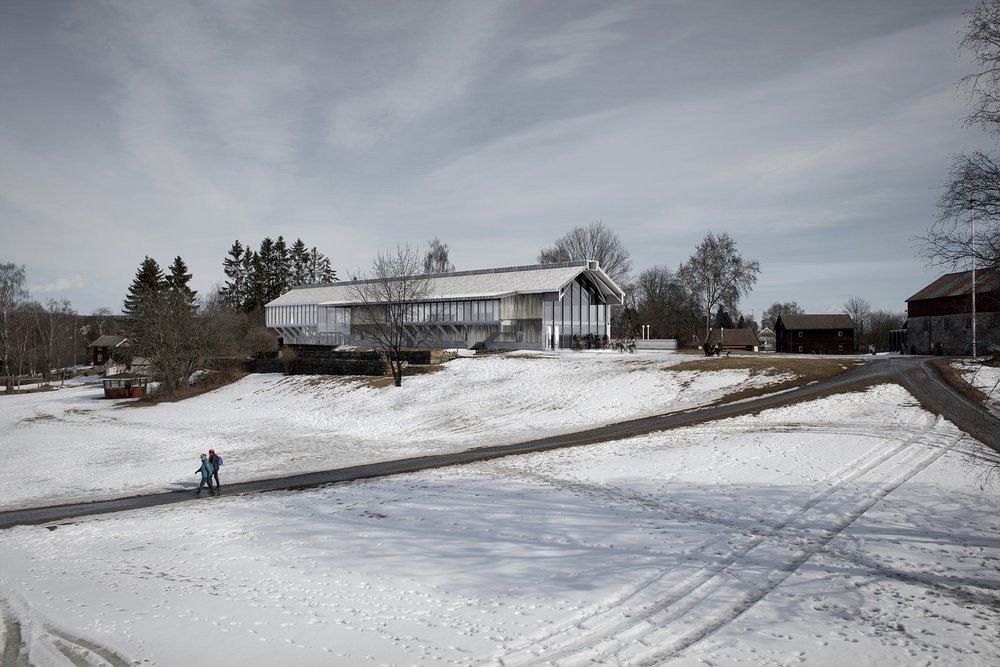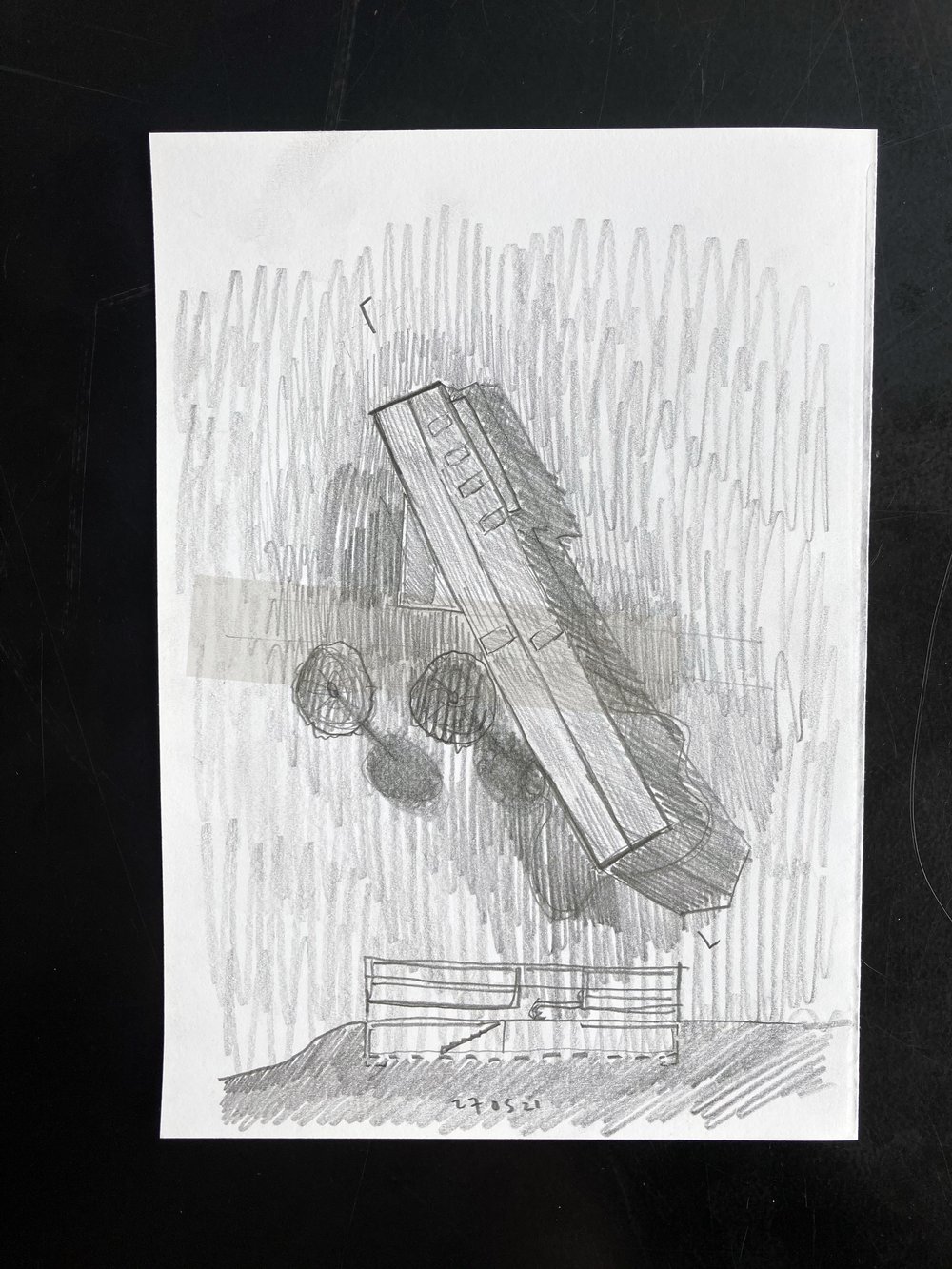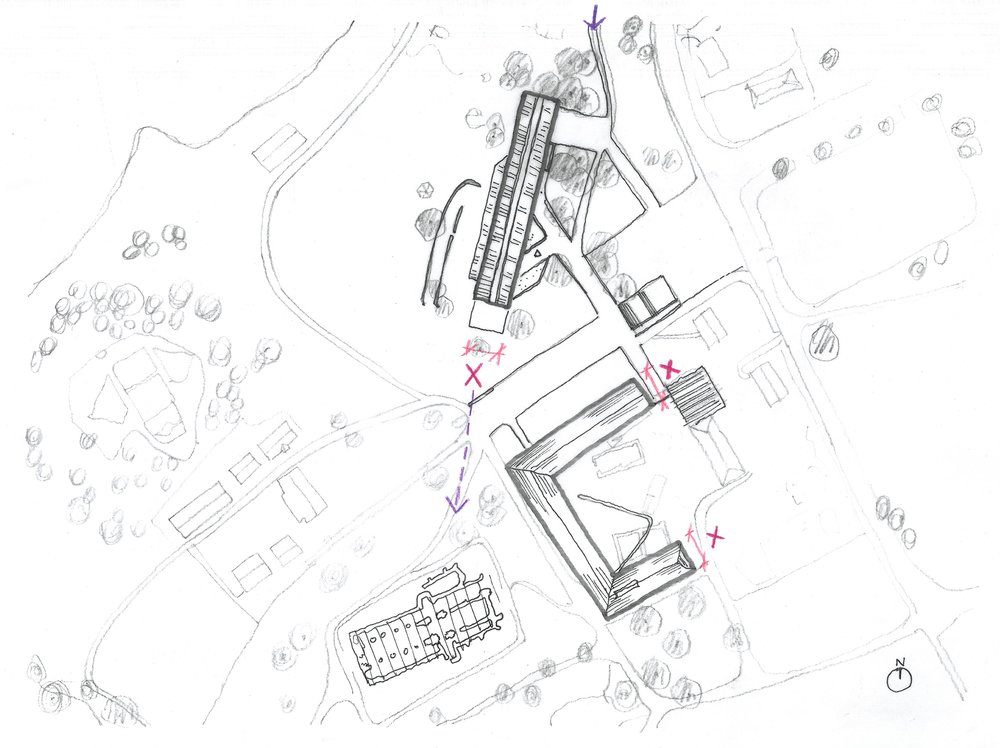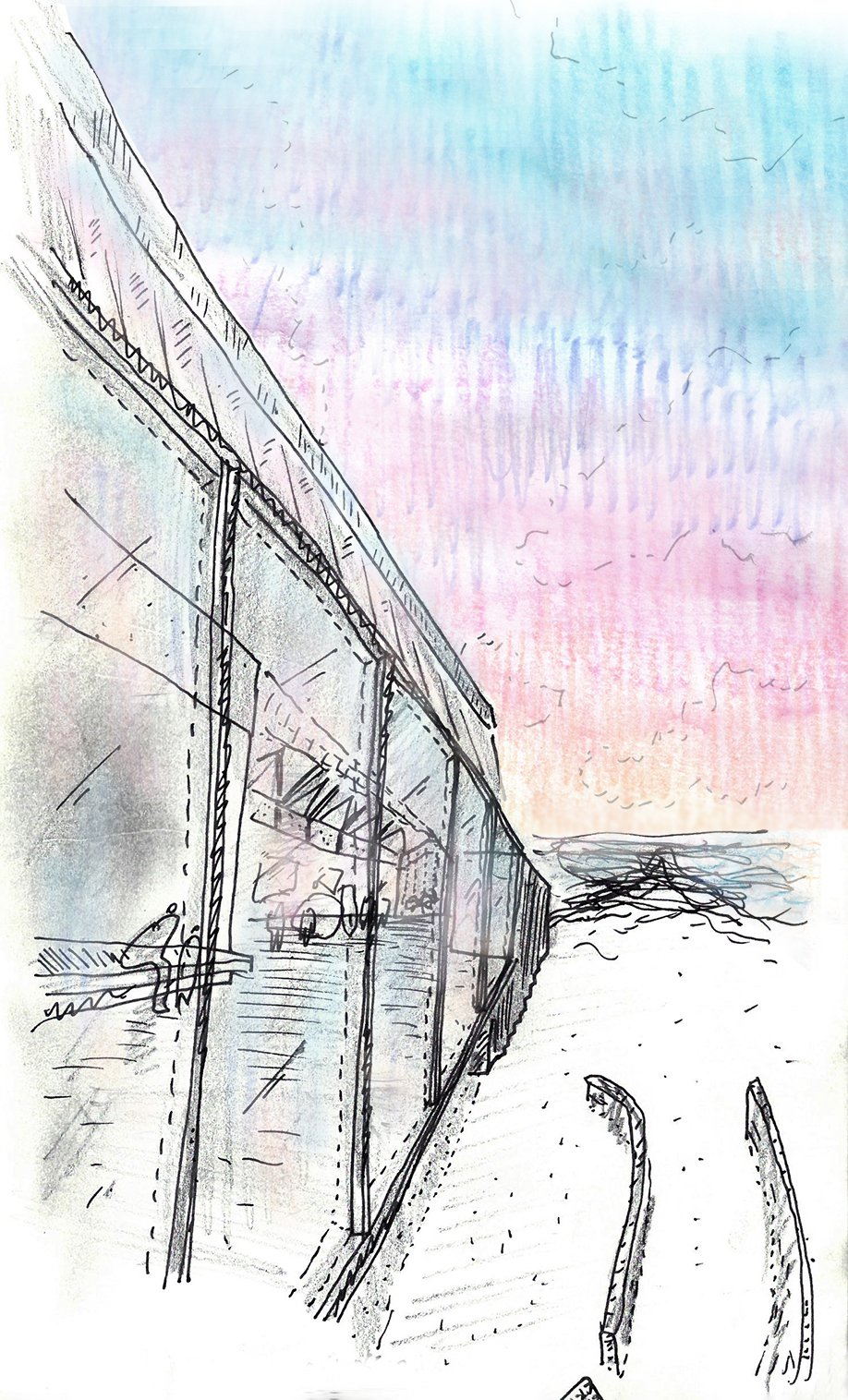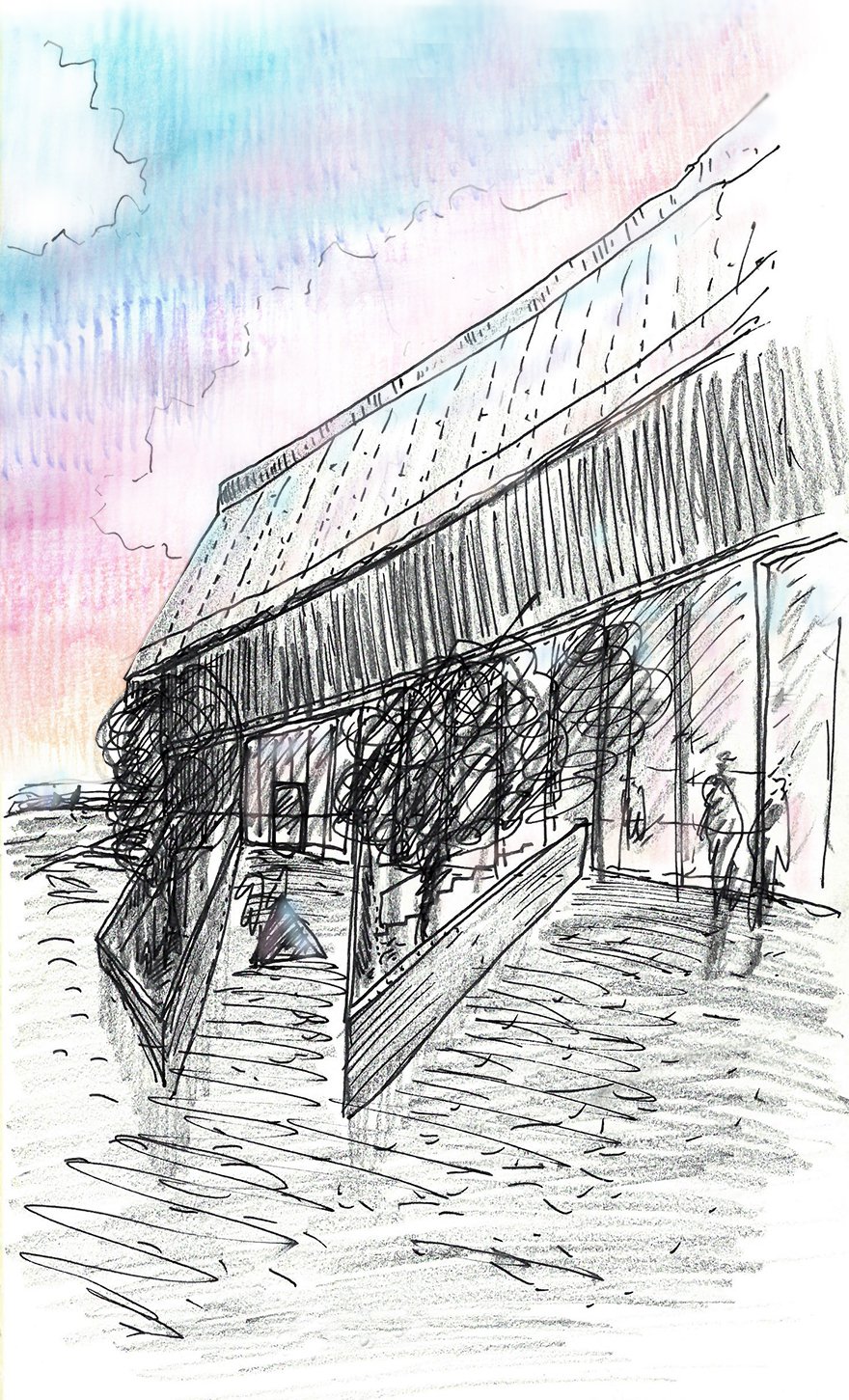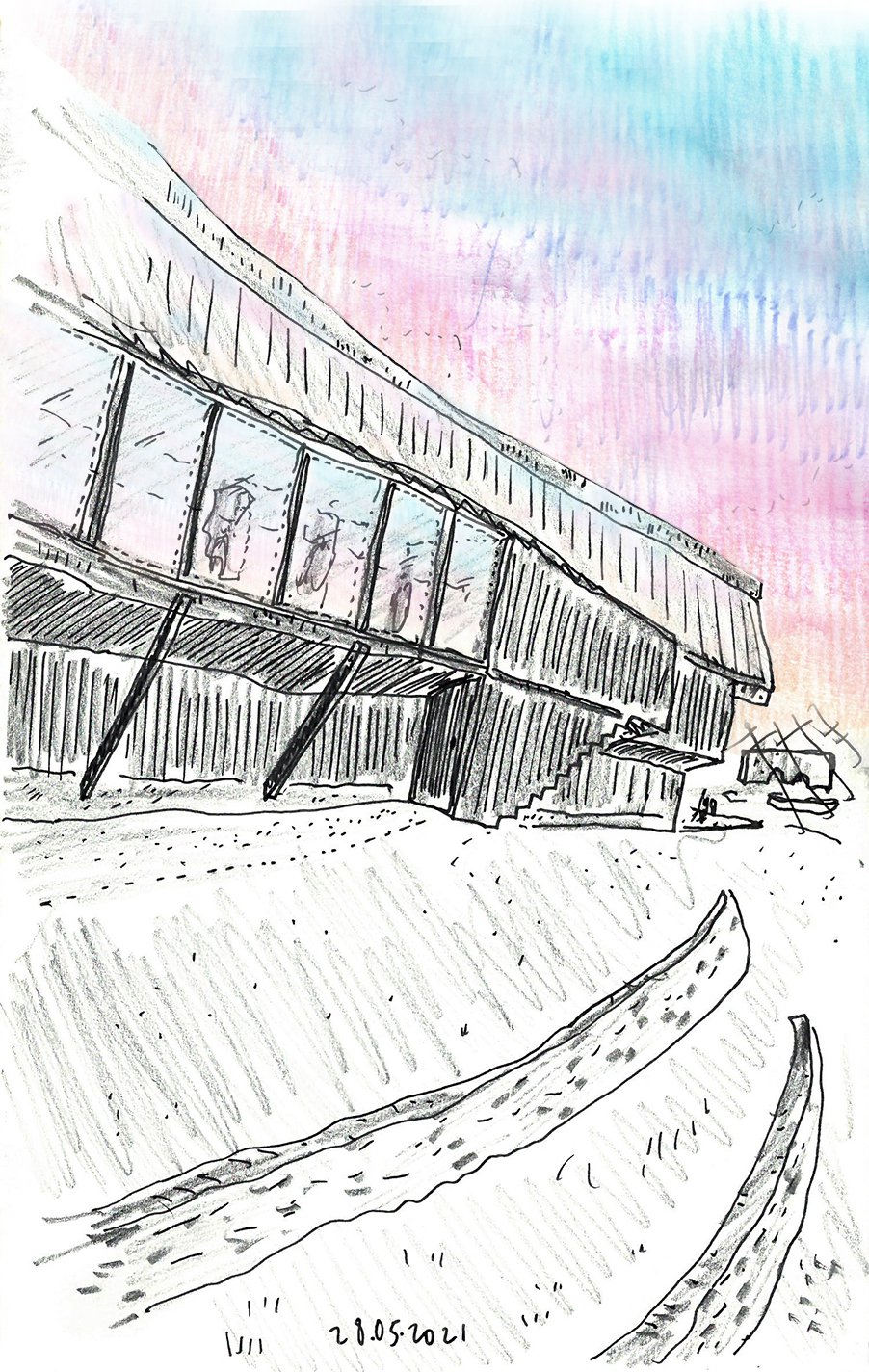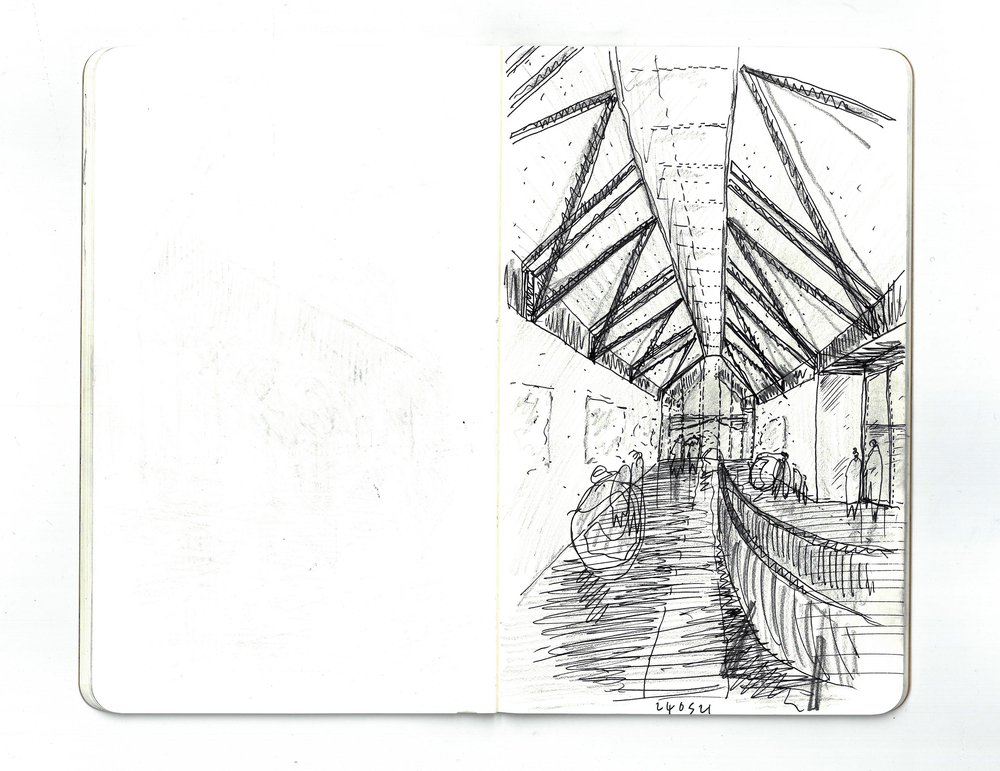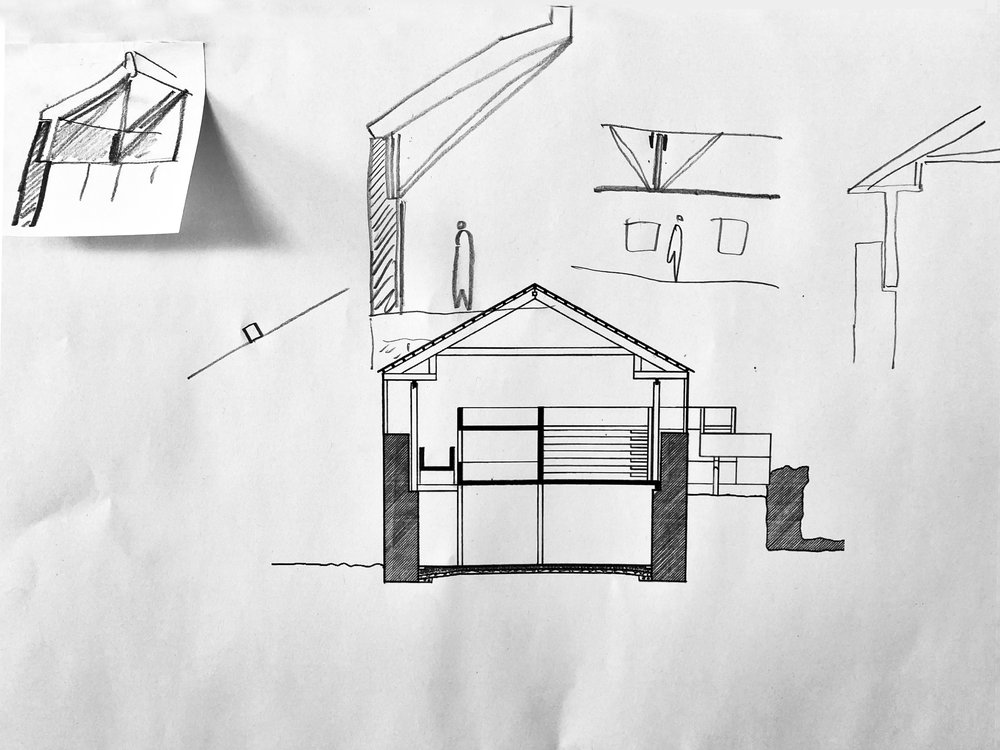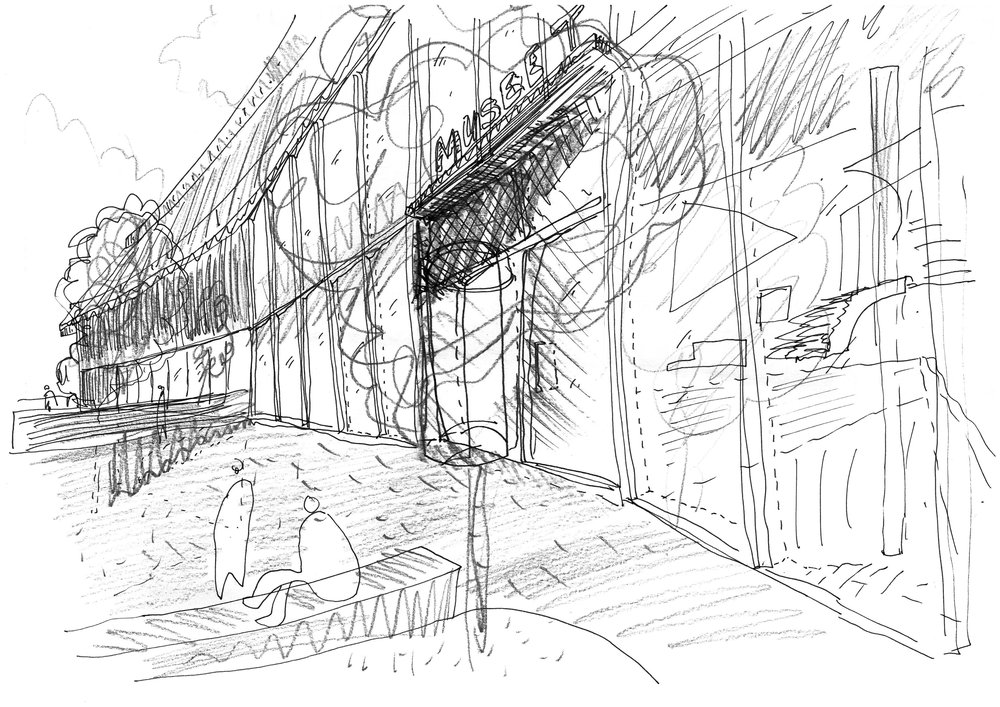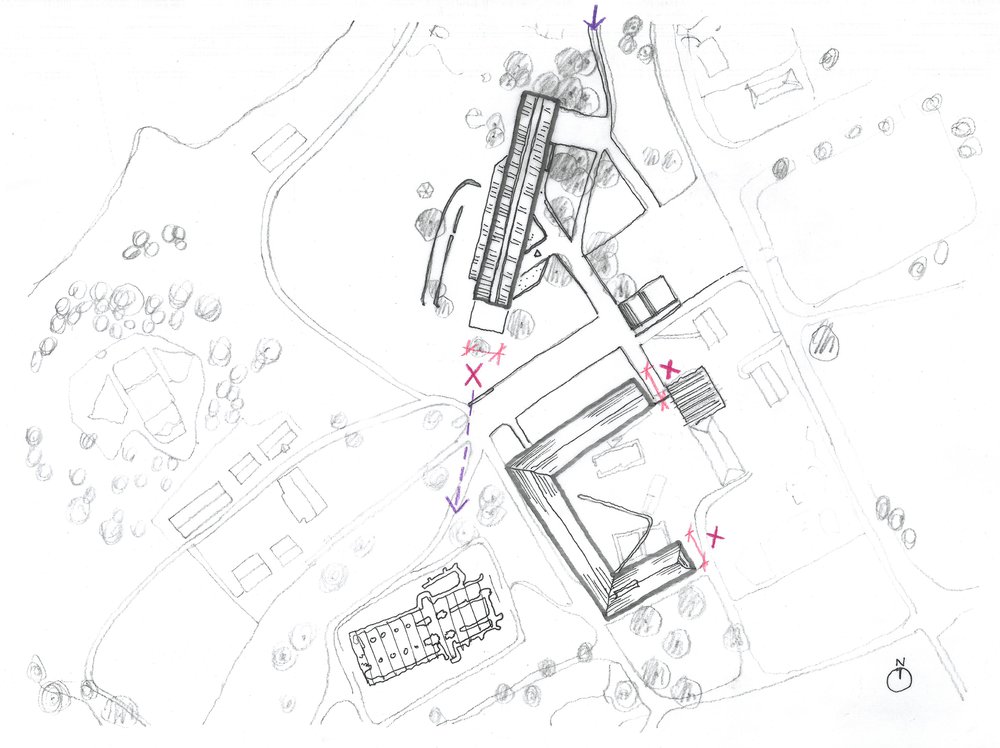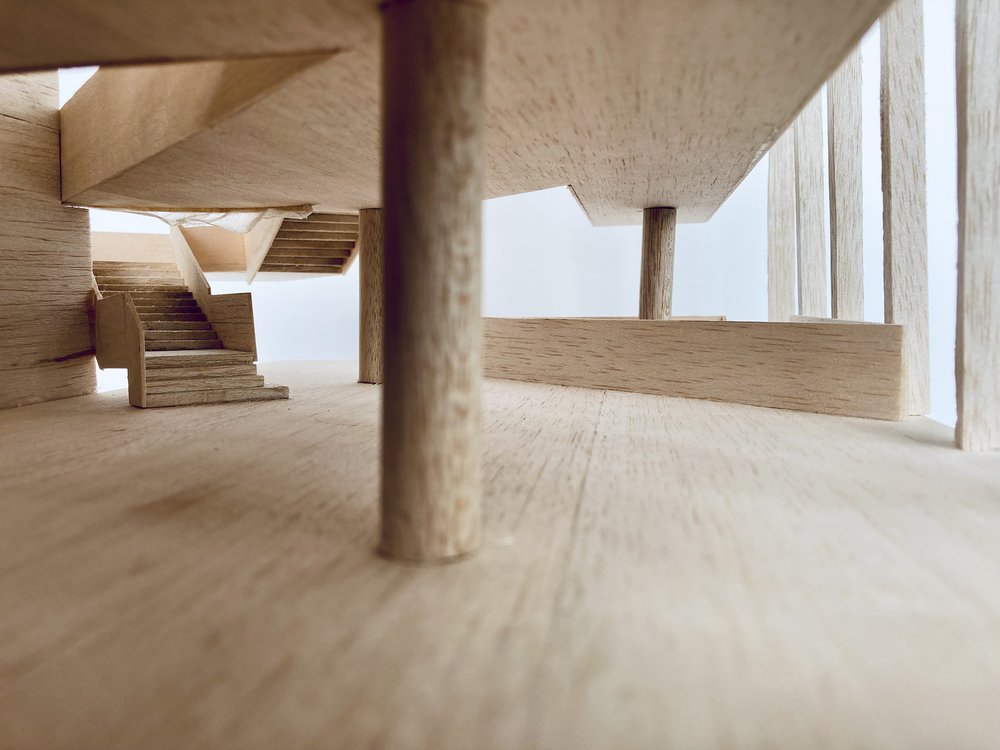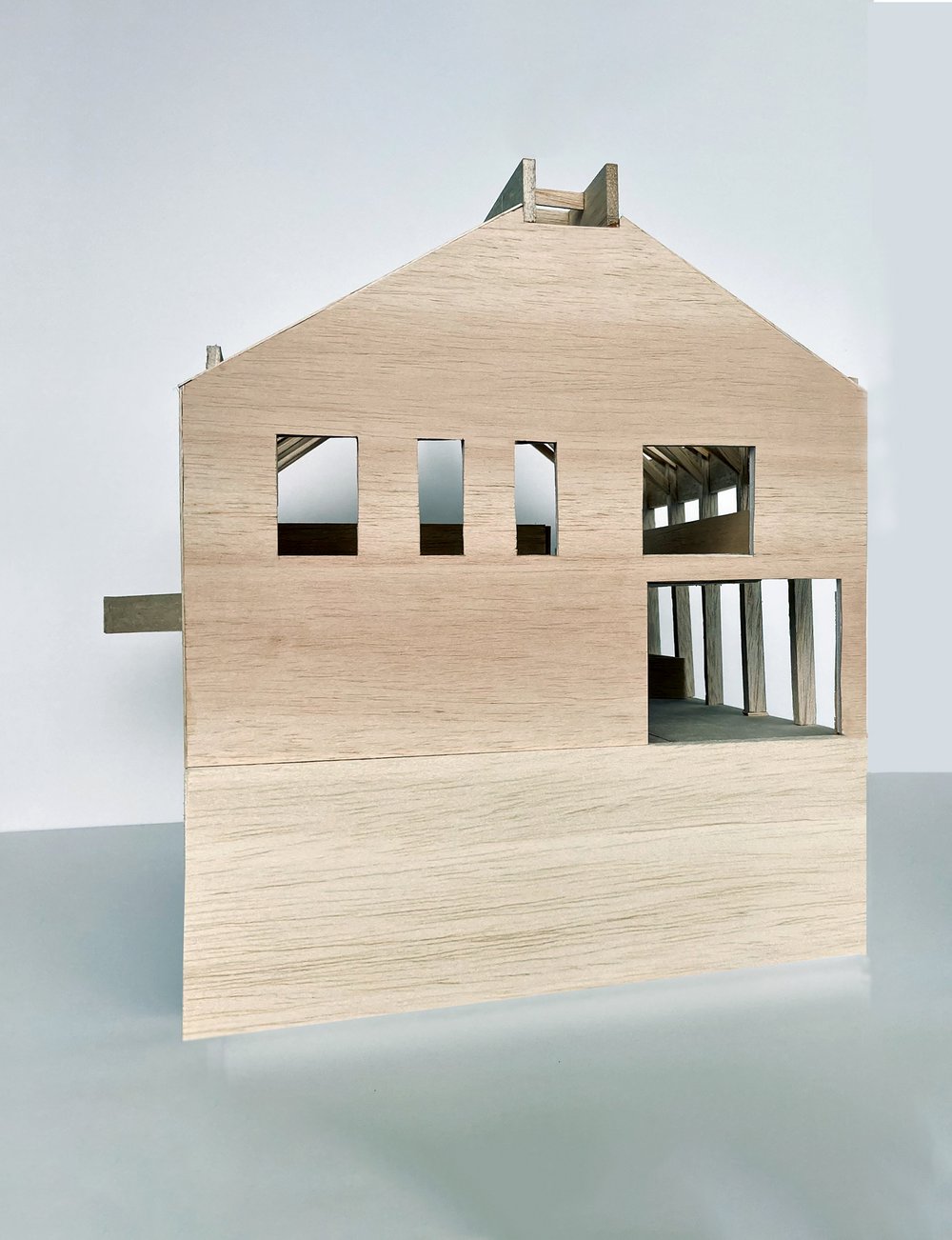First page target
Anno Museum Competition Hamar Norway
From Immersion to Reflection:
A New-Old Building for Hamar
Intention and Concept
Svere Fehn described his work at Hamar and Domkirkeodden as enabling one “to get a grip on history”, and the deep scales of time present there, via an architecture that juxtaposes this with the “rhythms” of daily and seasonal life on the peninsula. According to Professor Dr Mari Hvattum of the Oslo School of Architecture and Design, this “grip” is achieved through movement. One proceeds, she observes, via movement vertically: “From being literally immersed in history in the entrance hall the ramp creates a distance which makes the past comprehensible in a new way. In a sense, the whole story of the museum is told in this move from immersion to reflection, and Fehn’s architecture facilitates that move through sight and sense.” This evocative and poignant observation has inspired us to craft a new building whose essential aim is to create an extension of Fehn’s fundamental architectural ideas. One which reveals the geography, history, topography and cultural character of the site itself: a journey from immersion to reflection.
Relationship to the Landscape and other Museum Buildings
The mass, form, materials and geometry of the new building relates directly to StorhamarlÂven ñ it is of the same width, height and roof pitch, forming what appears to be literally a new wing of this, one that points directly at the cathedral ruins. The architectural details of SkrÂstadloftet - its external stairs, upper gallery colonnade and timber facades - are also subtly echoed in our design. The majority of the existing mature trees to the north of the competition site are retained, and carefully incorporated into the design as part of the entrance to the new building. The new design is embedded in topography of the site, parallel to the ruins of the neighbouring old fortress, sat like it was - on top of a hill. A new paved public space - slightly raised from bus drop-off area - is created between the new building and StorhamarlÂven. From this wide causeway, the entrances to StorhamarlÂven and Domkirkeruiner are clear, as is the entrance to the new building. The new civic square could be used as a festival space for the annual Midsummer celebrations and cultural activities associated with the site.
Feasibility
The new building form is compact, enabling economic construction and preservation of energy. It is straightforward as an external form, but spatially exciting and dynamic within. Materials are predominantly concrete and timber, creating a degree of spatial continuity with StorhamarlÂven and with the traditional construction of the neighbouring structures, such as SkrÂstadloftet. This approach enables the structure of the building to be expressed internally, forming robust and tactile surfaces that are highly responsive to light and shadows – and avoiding the need for additional expensive lining materials.
Conclusion: A Poetics of Immersion and Reflection
The building will reveal its working life to visitors in spatial and material terms. Movement through the new building is extremely haptic and physical, emblematic of the geology of the site itself, from rockiness thickness and glassy reflection at the lower level - in what appear to be excavated spaces where the library and archive, etc. are situated; upwards to light-weight timber exhibition spaces that look directly towards the cathedral and the lake. This spatial and material hierarchy encourages ìreflectionî via observation and contemplation: the aim is to craft a beautifully sensual and comprehensible series of spaces informed by tectonic and constructional logic. The lower level is formed as a series of concrete retaining walls, and stone floors, incorporating grotto-like gardens planted with trees and rockery vegetation; the ground level is formed of exposed concrete surfaces, lined with timber furniture where human inhabitation meets the scale of the buildingís structure. The upper floor is like a great upturned timber boat, suspended and floating over the spaces below, dropping natural light via the 81m long central roof light. This light orients visitors, ultimately towards a framed view of the cathedral ruins. This view is the culmination of a journey that commences via what appears to be a bridge, or causeway, defined by existing and new trees, a series of triangular light wells, benches and lights. On entering the lobby through the main doors, the route from Fehn’s buildings continues to assert its presence as a dramatic sequence of stairways and cuts in the fabric of the new building, creating a grand civic hall at its heart. The topography of the site seems to become the fabric of the architecture itself, in a poetic fusion of new and old - again.
Waypoint 1


